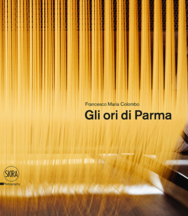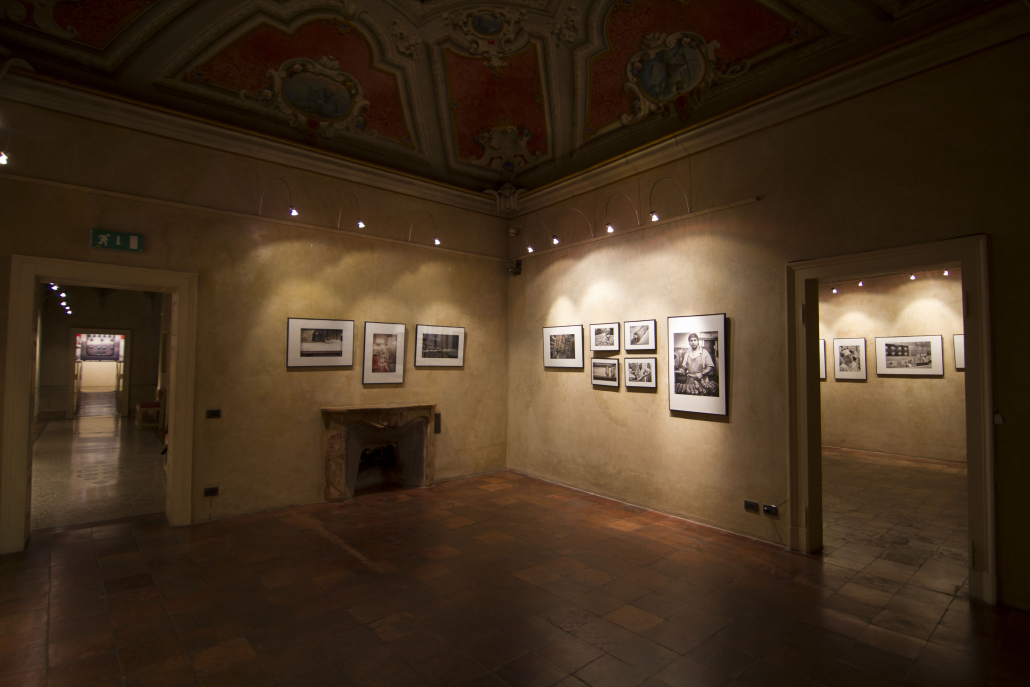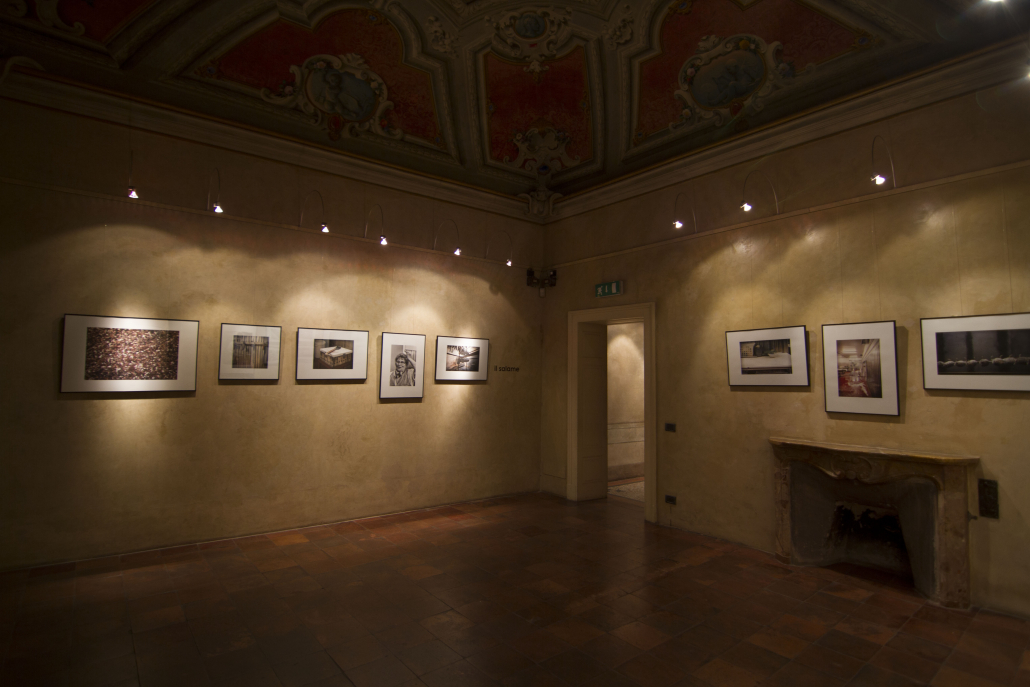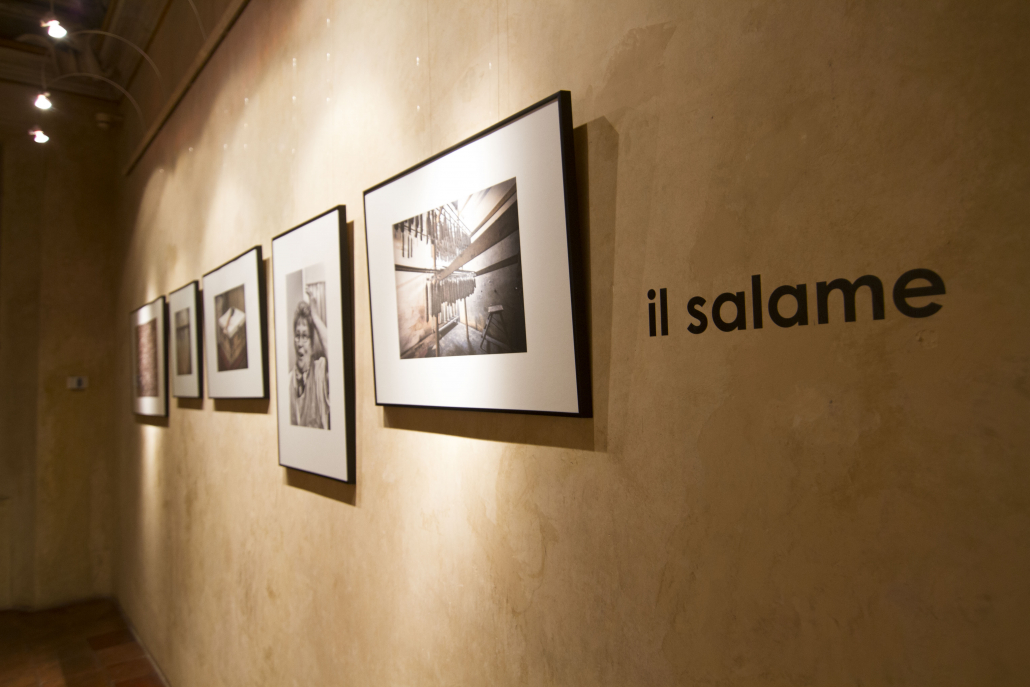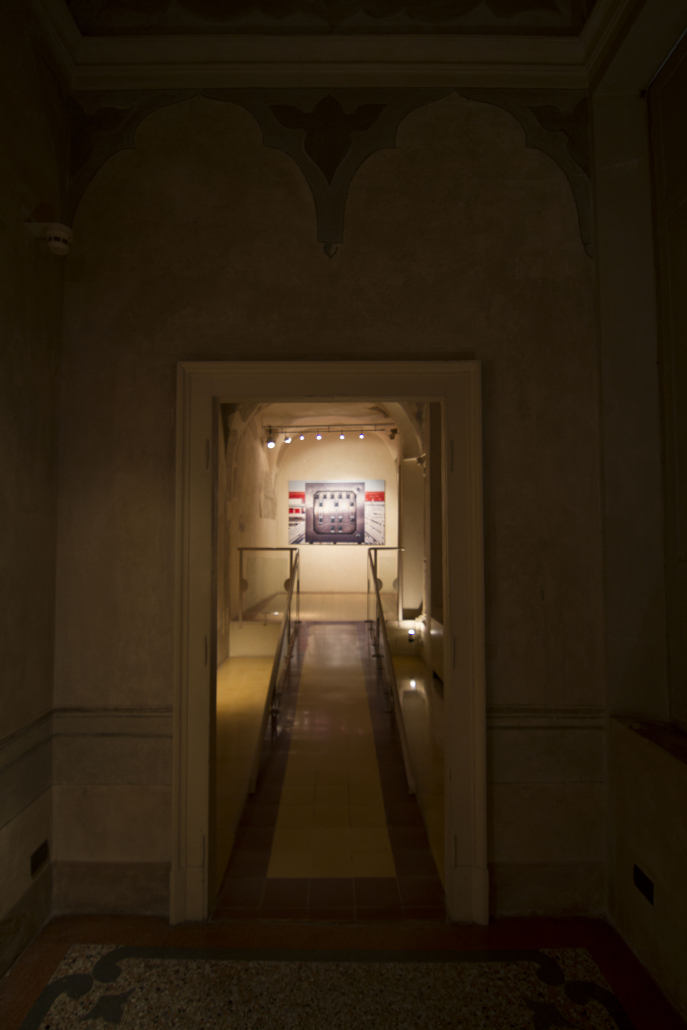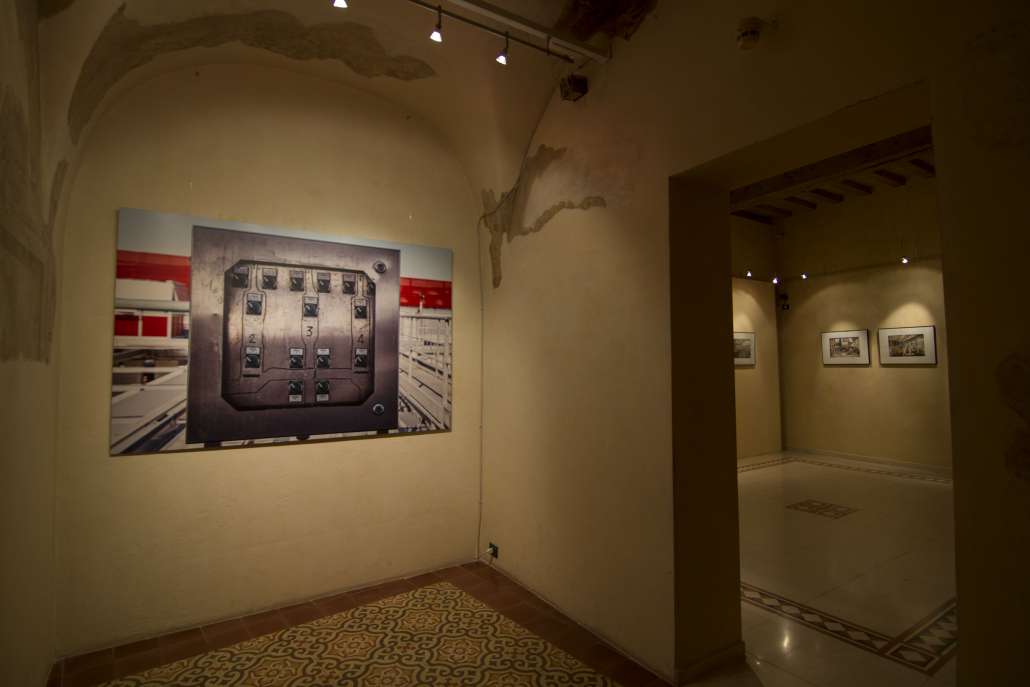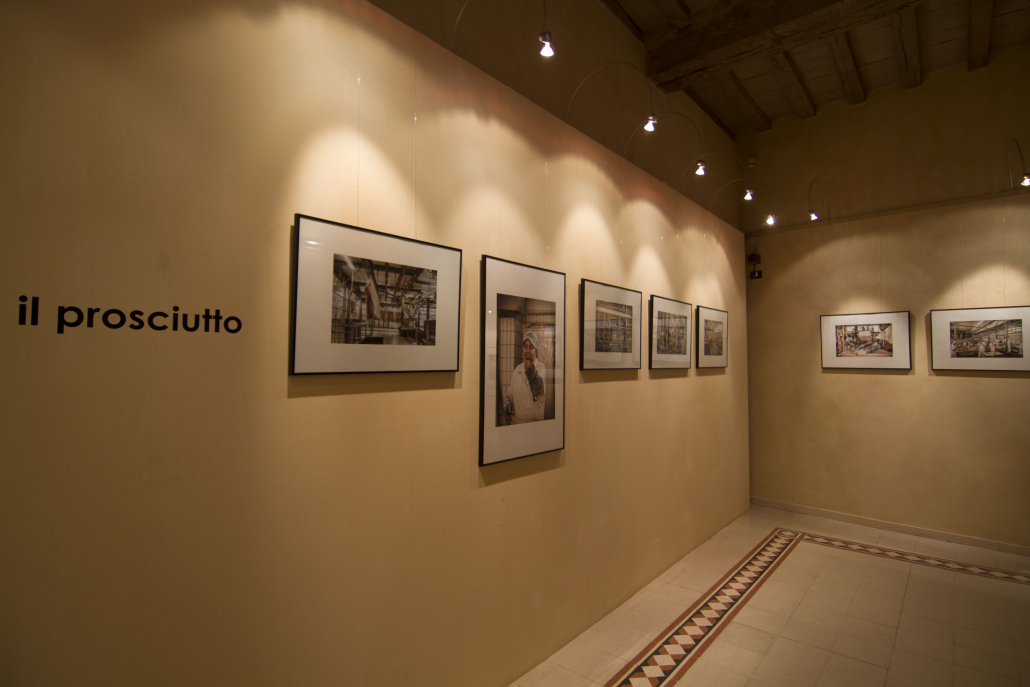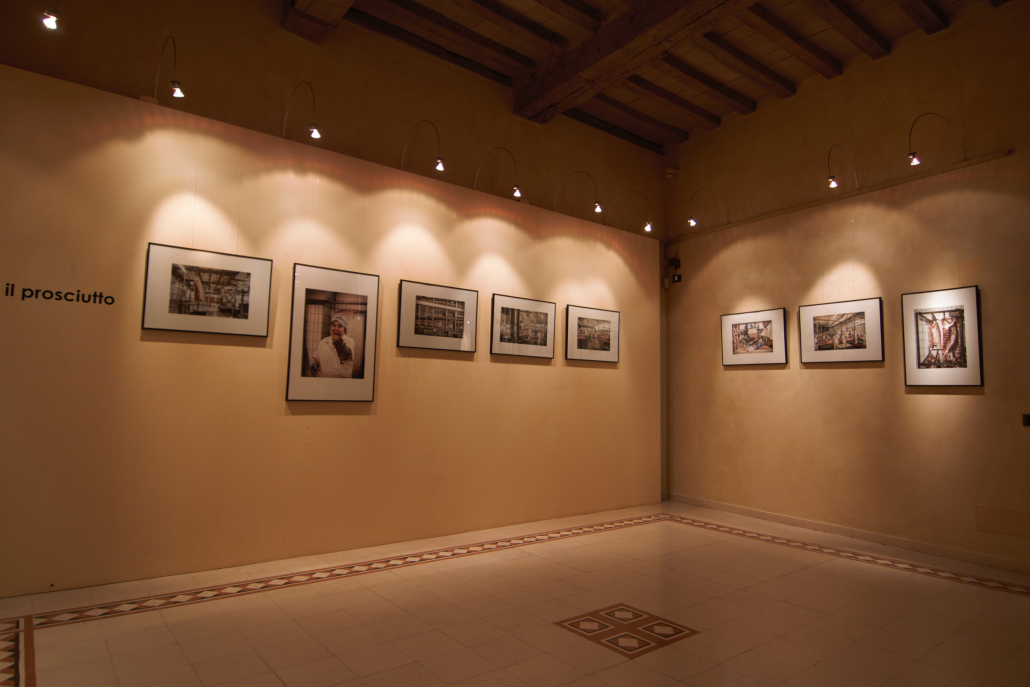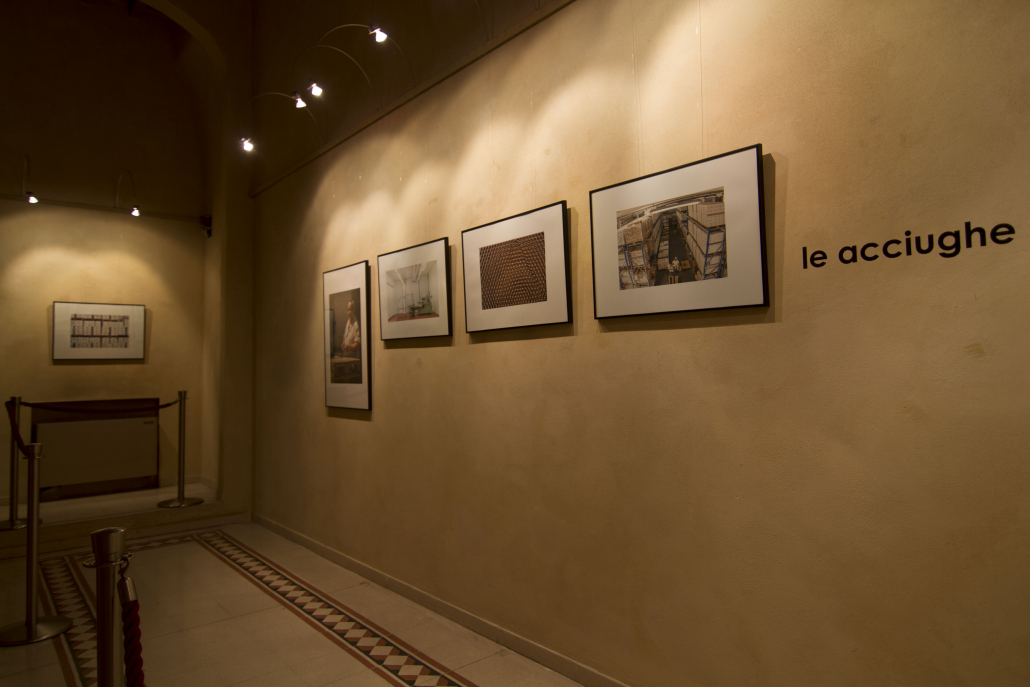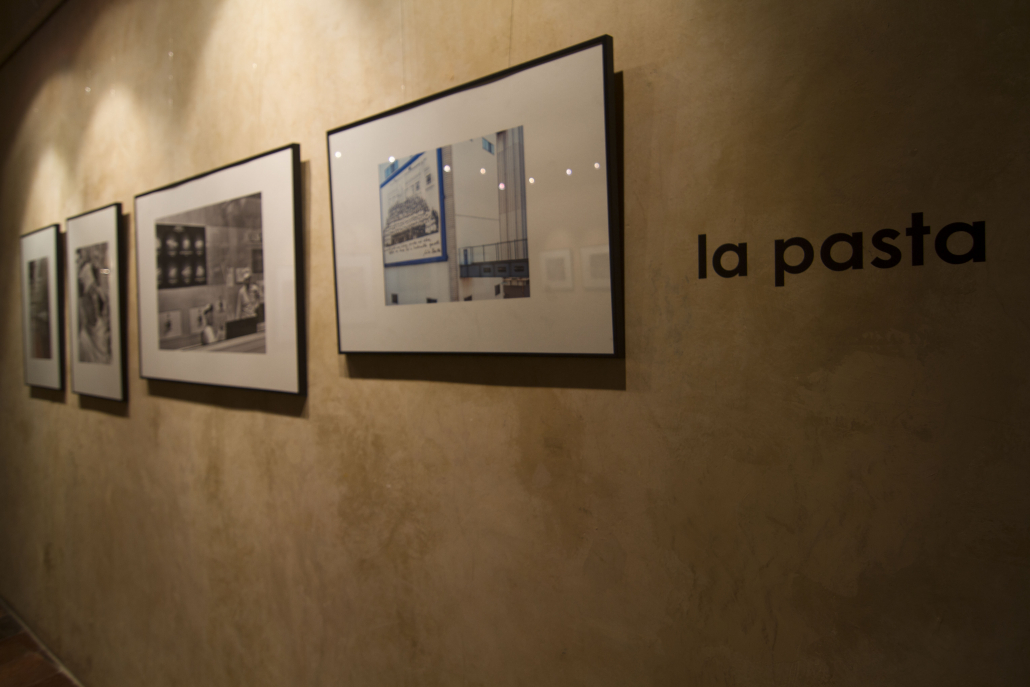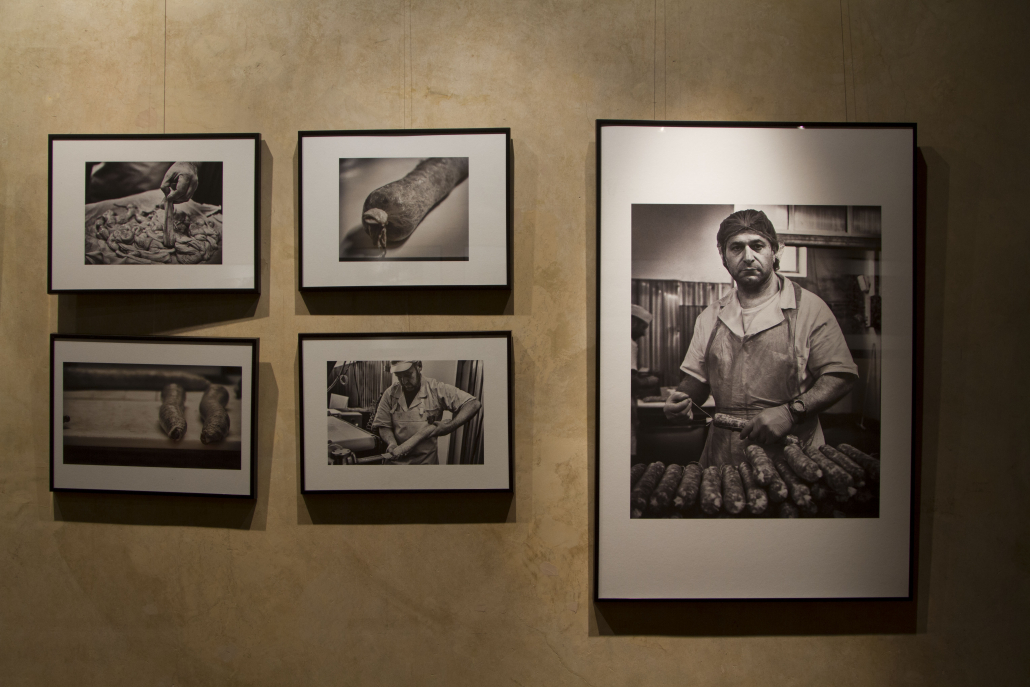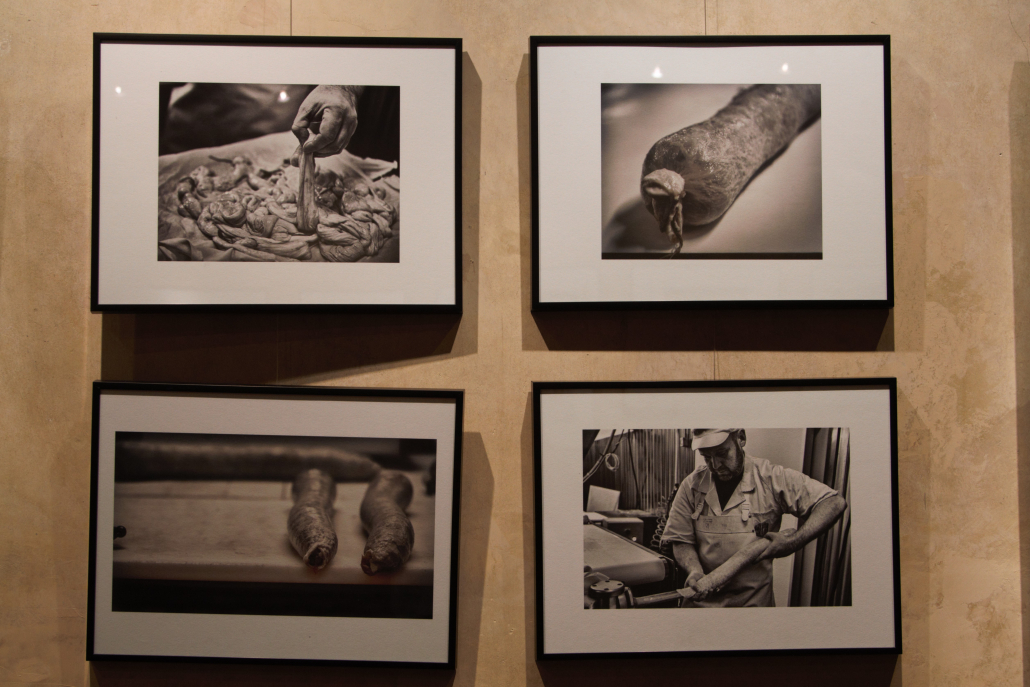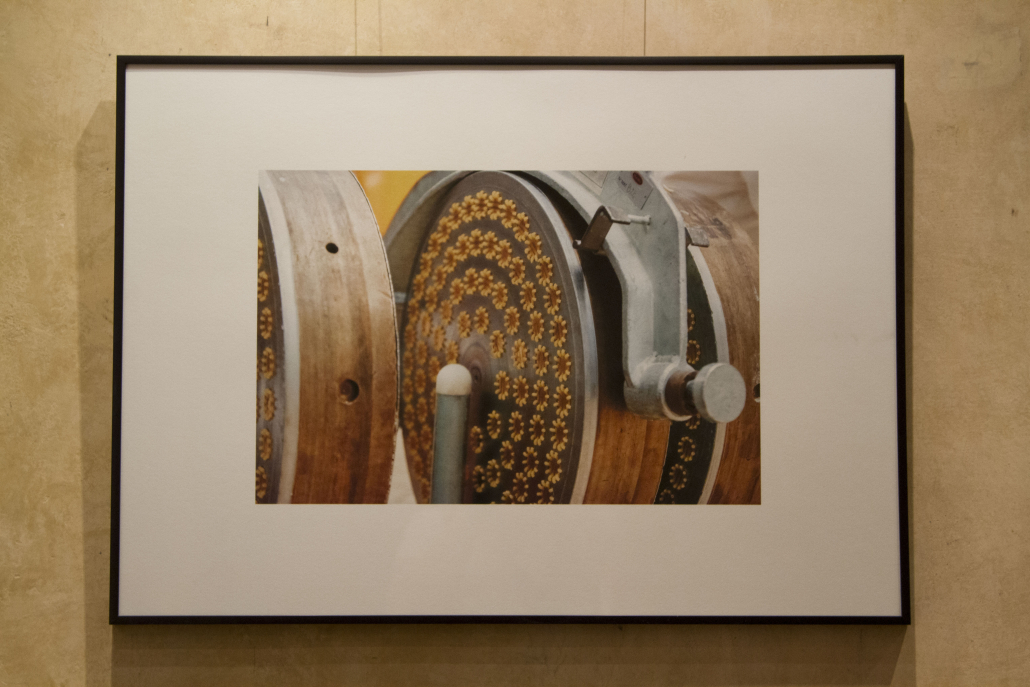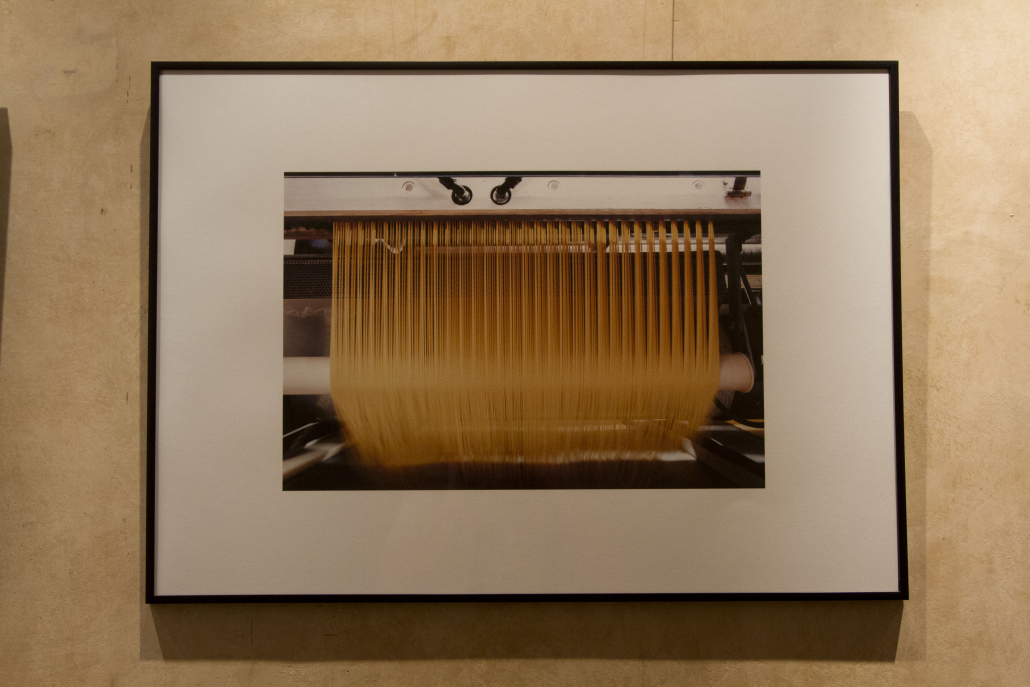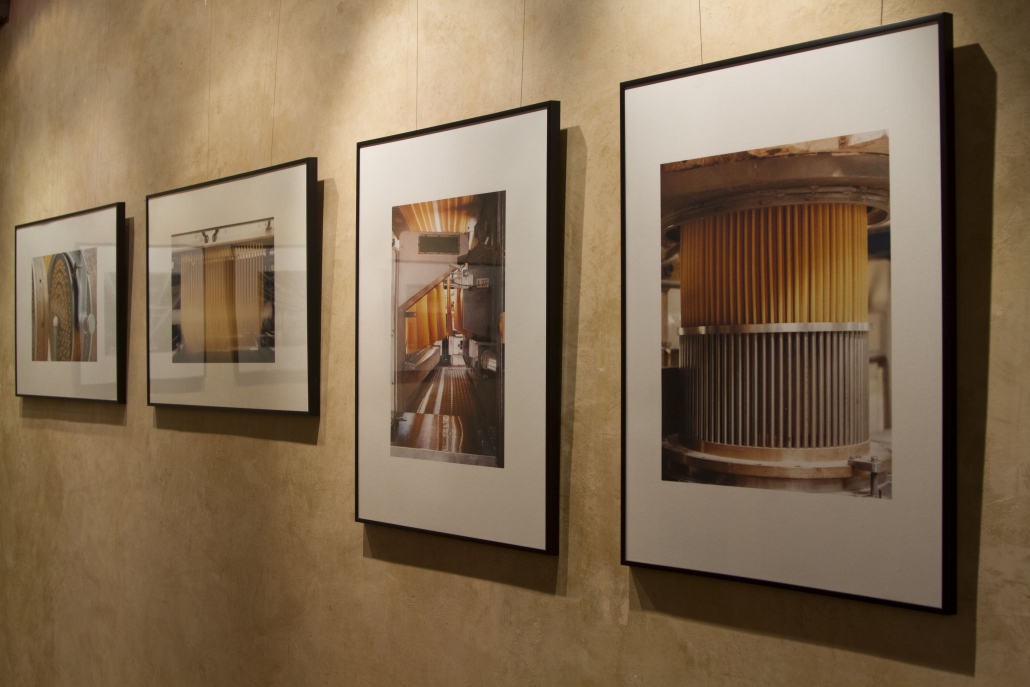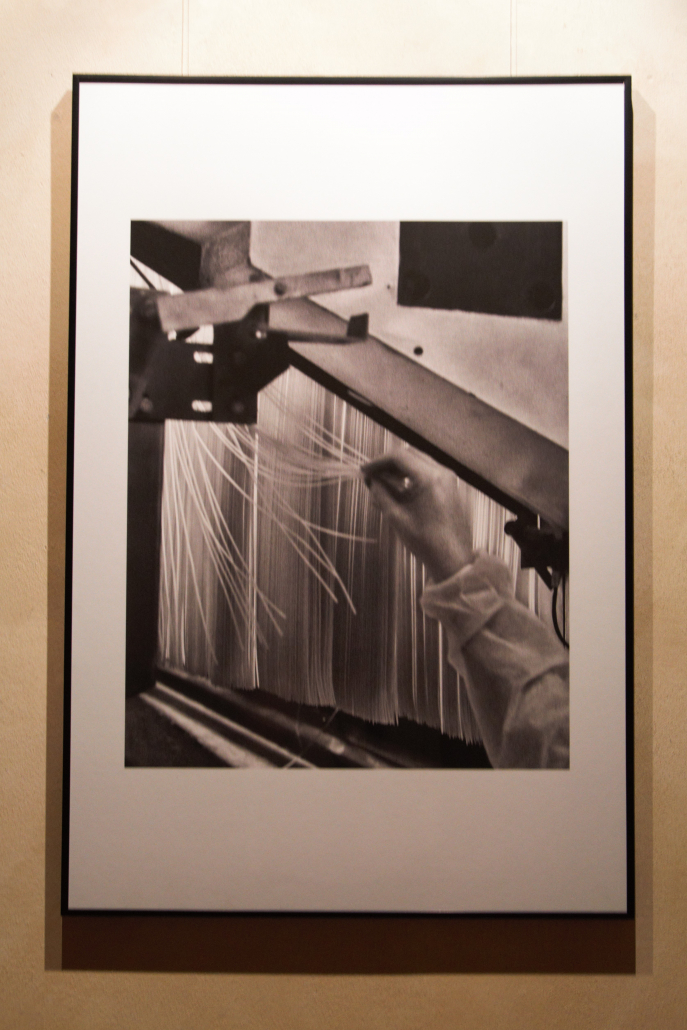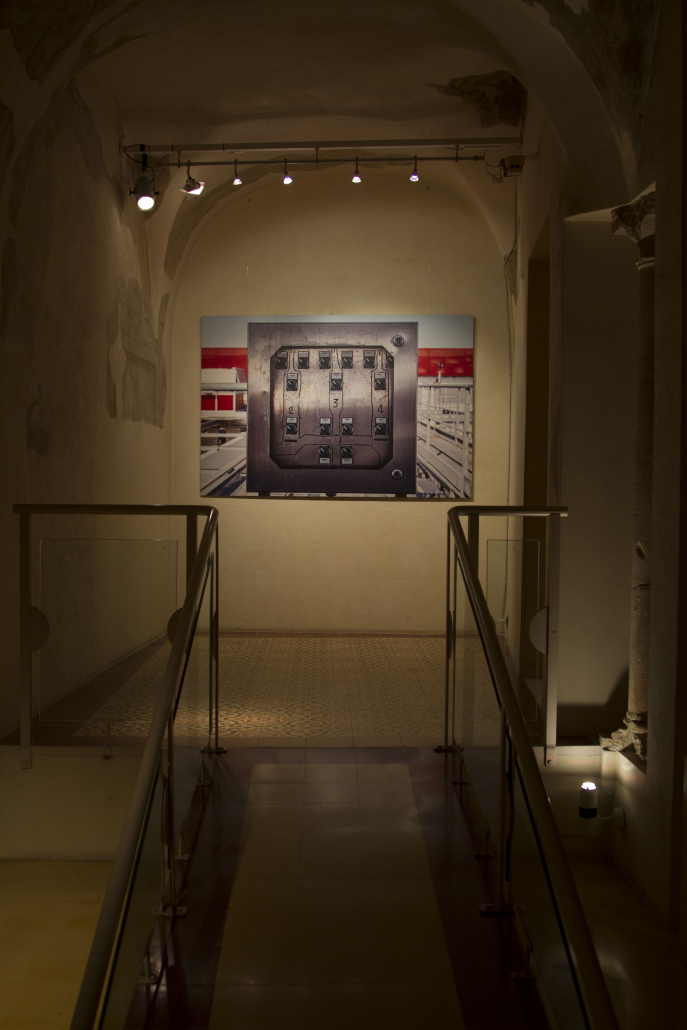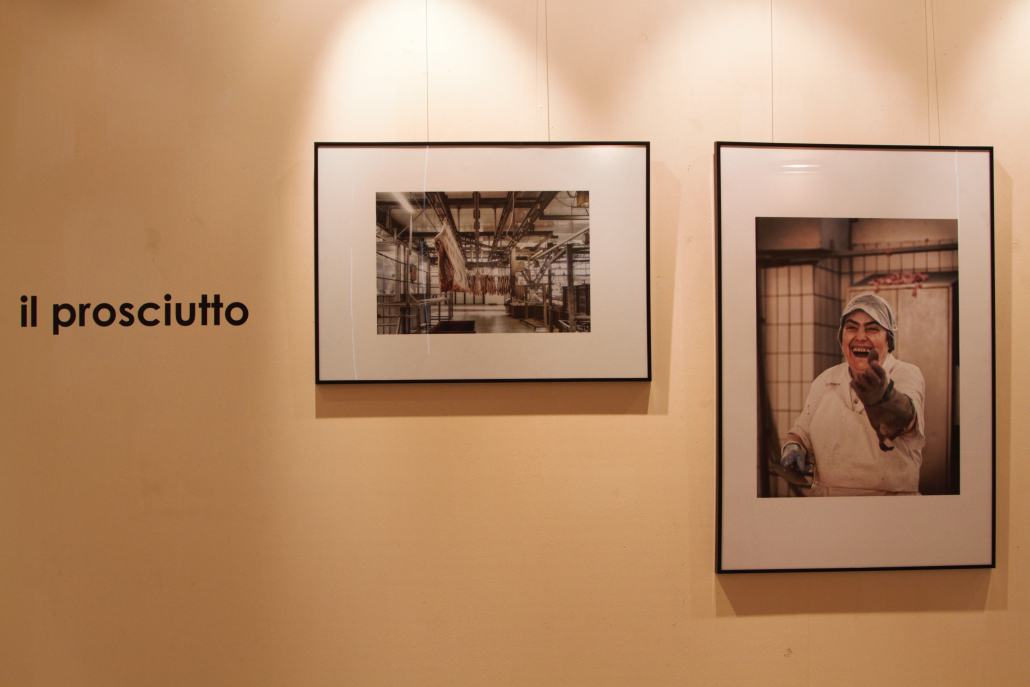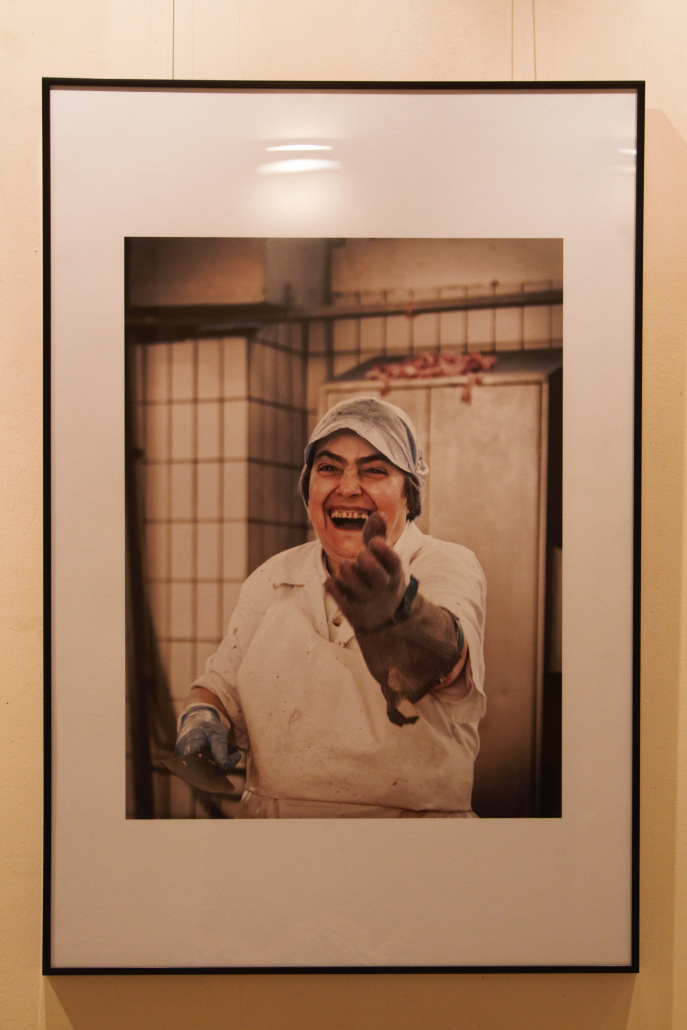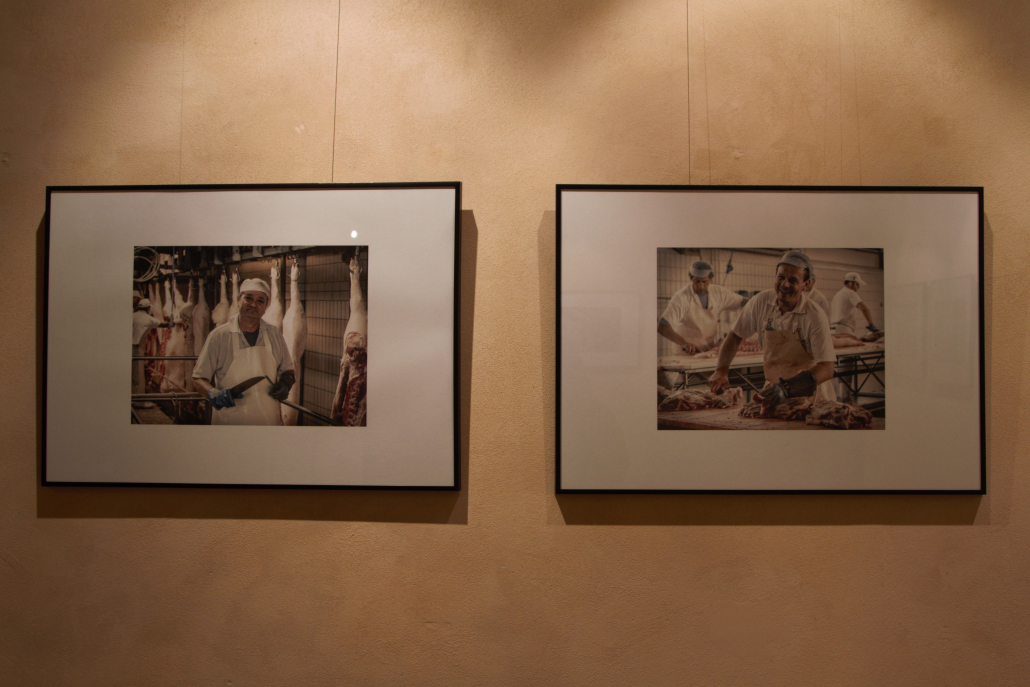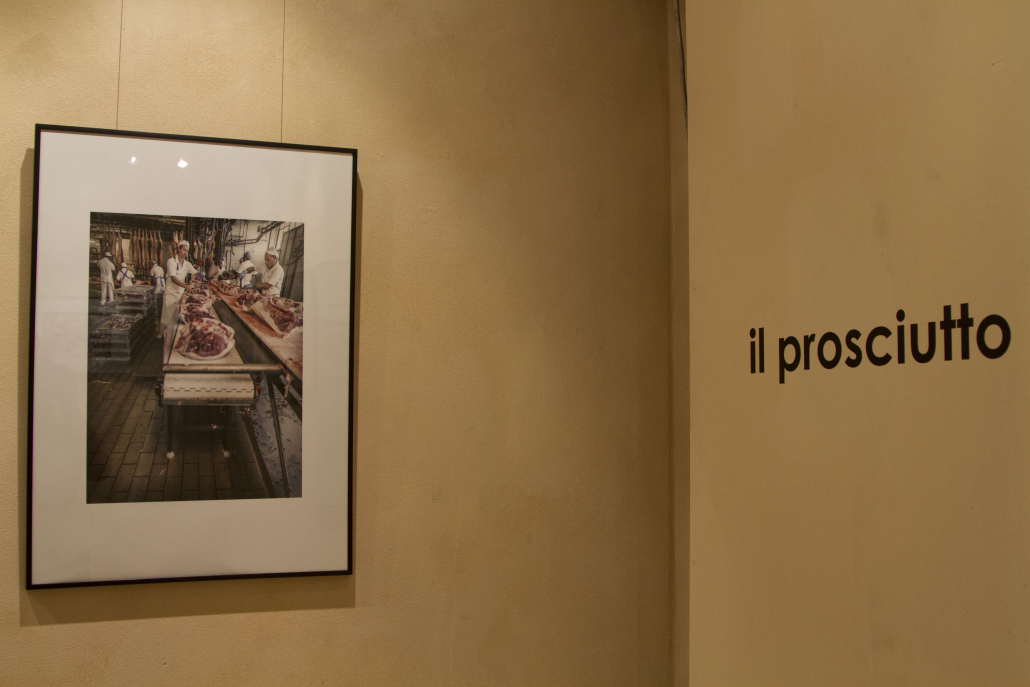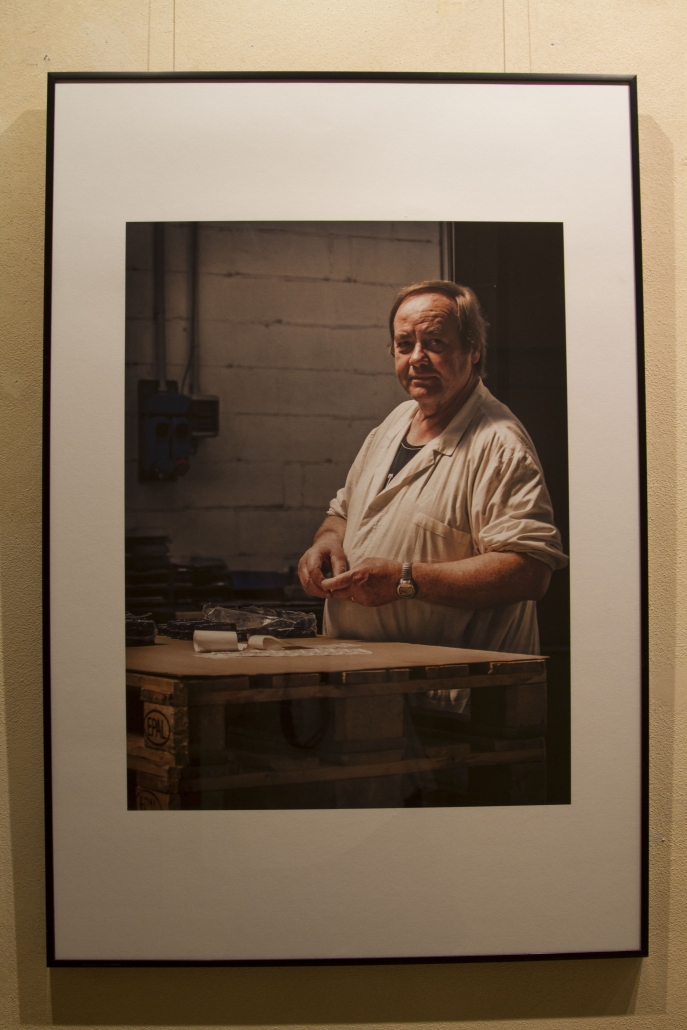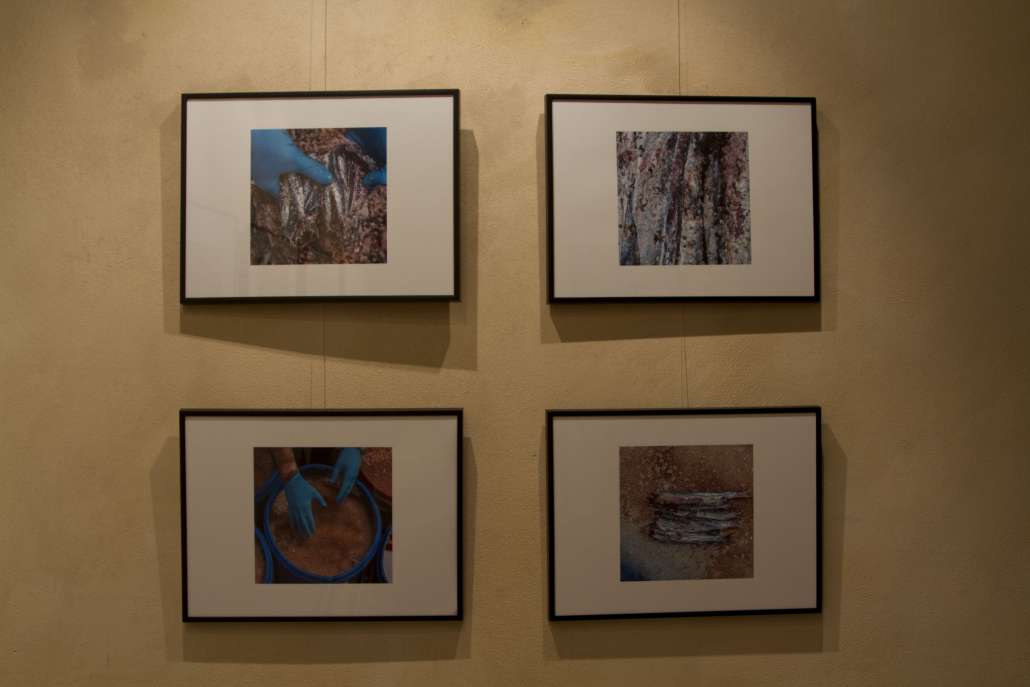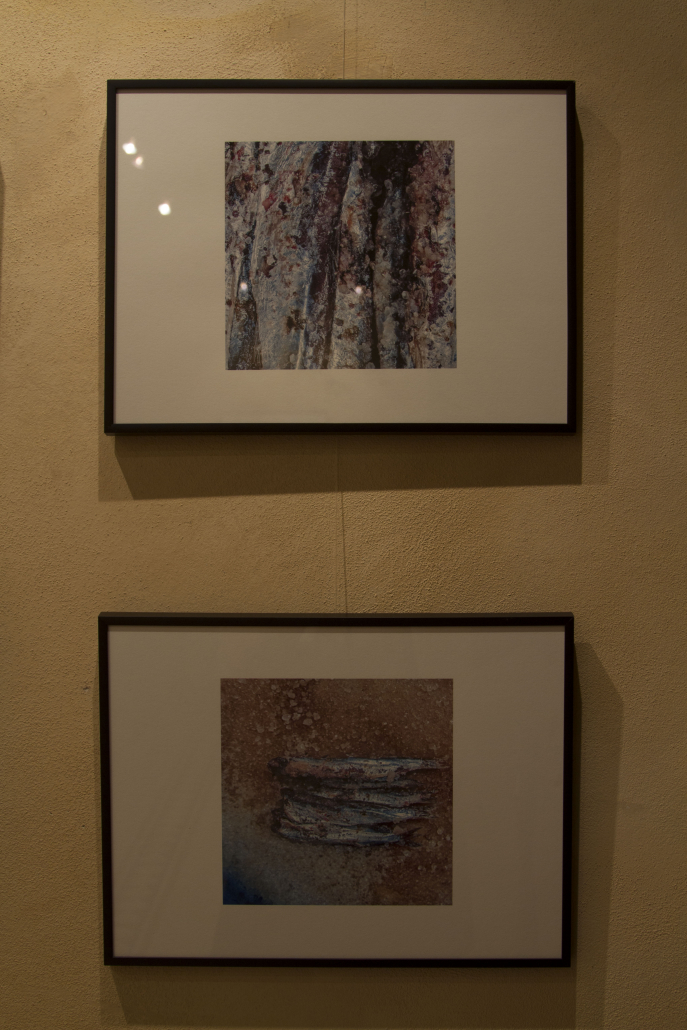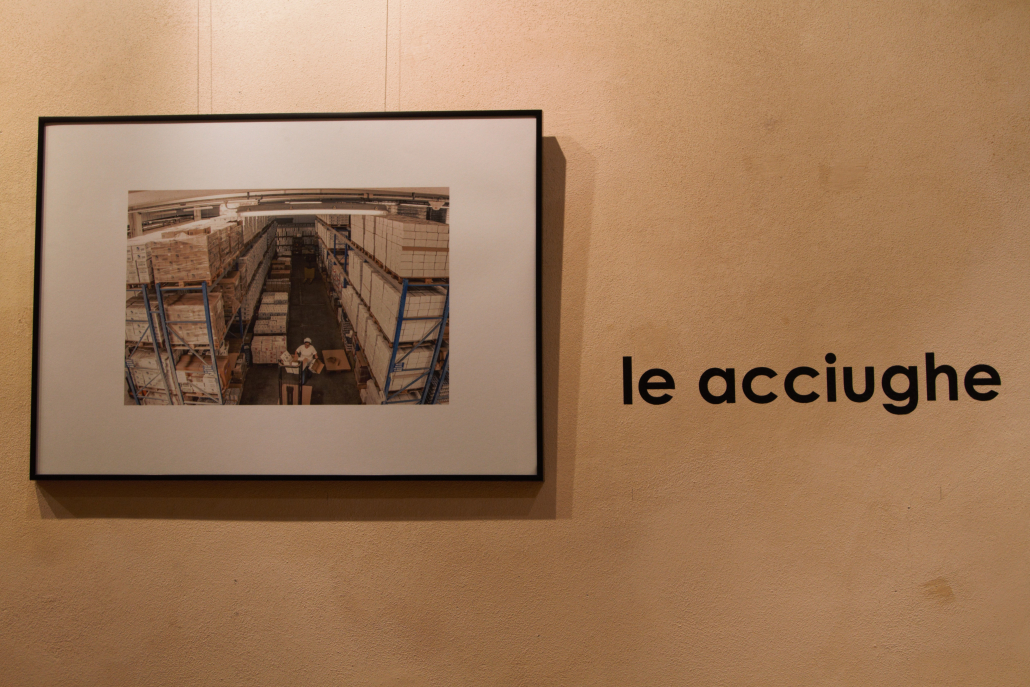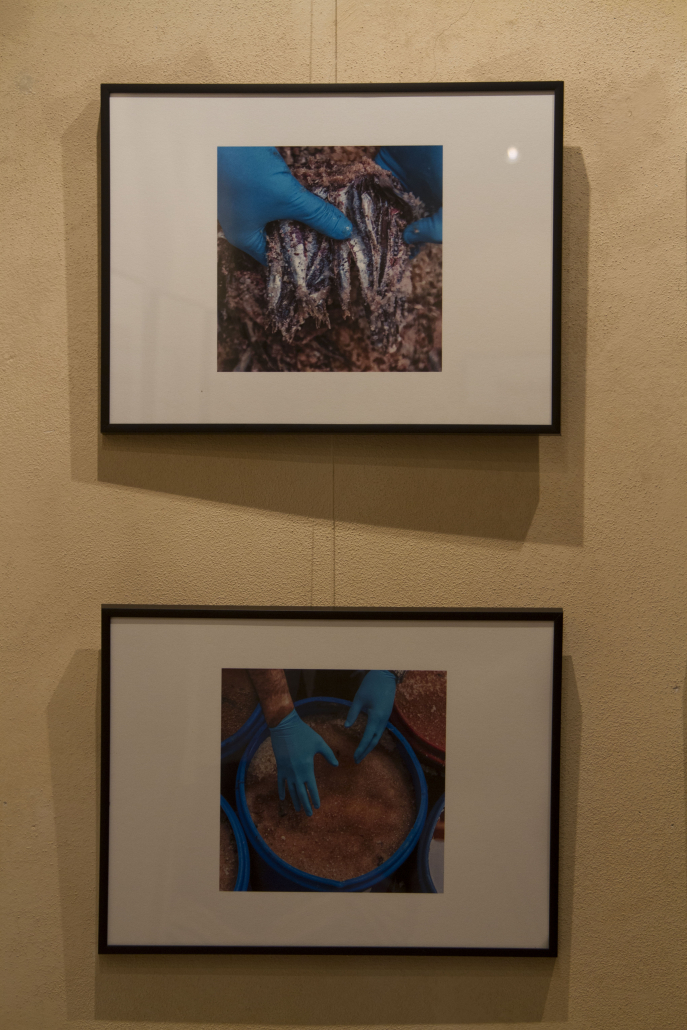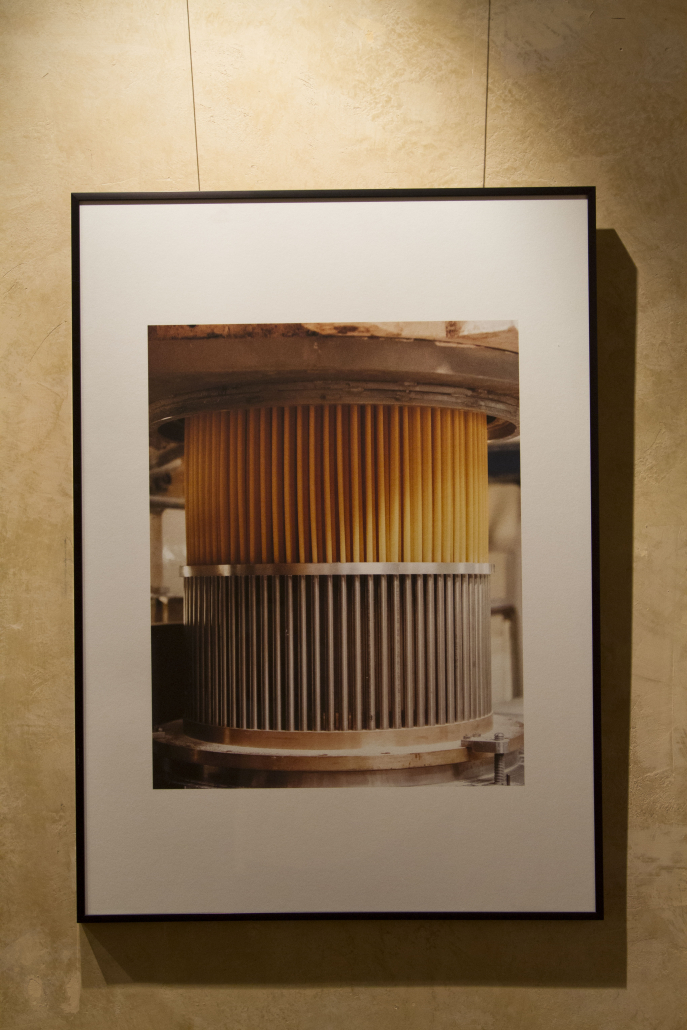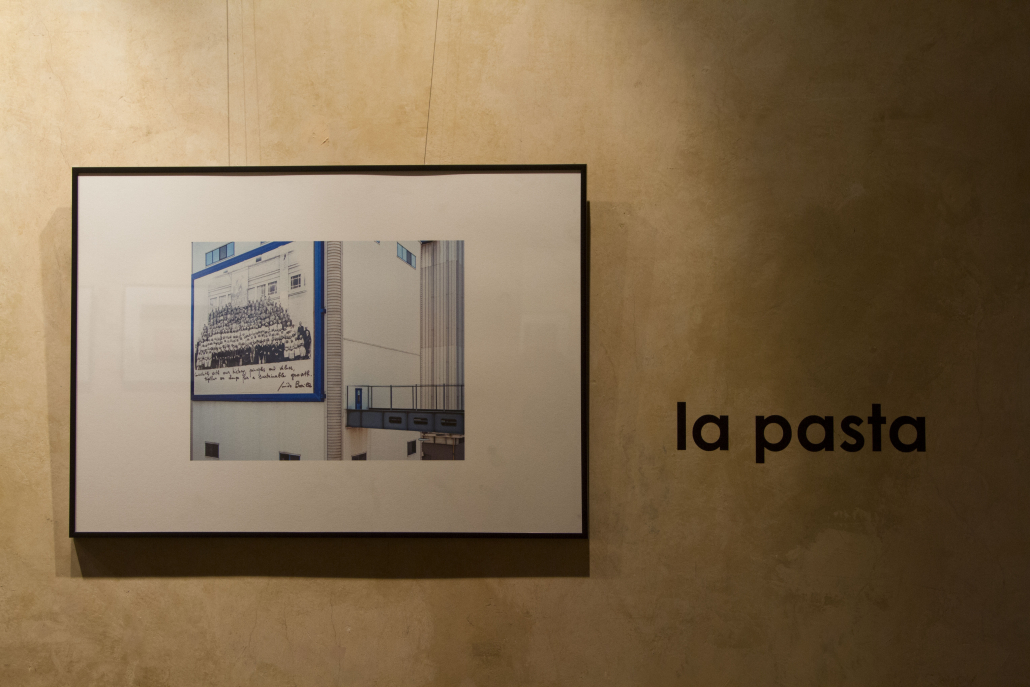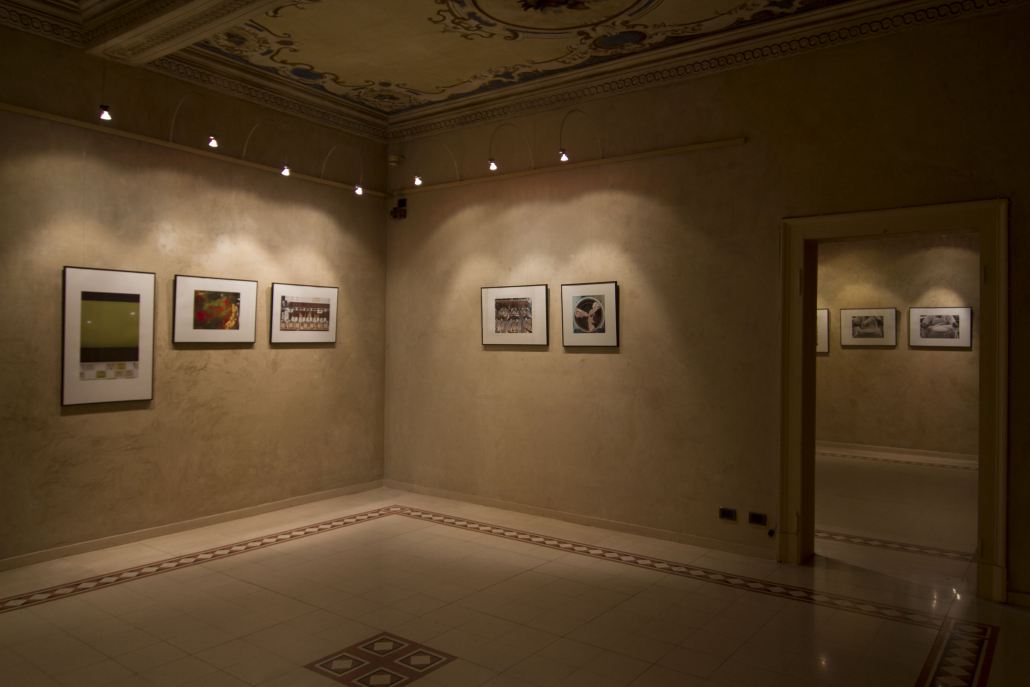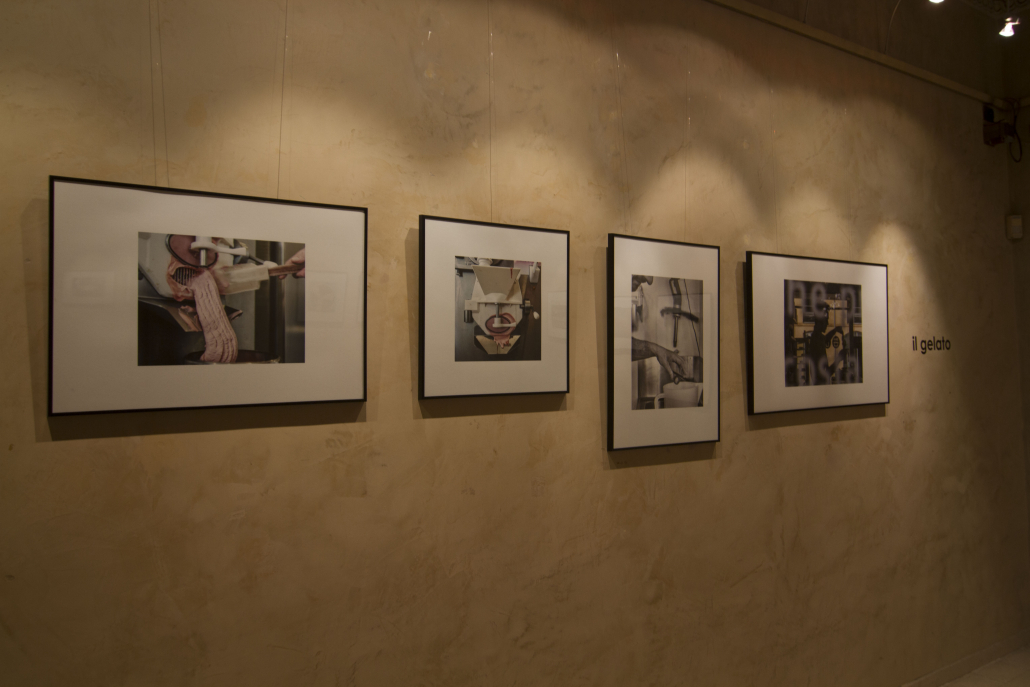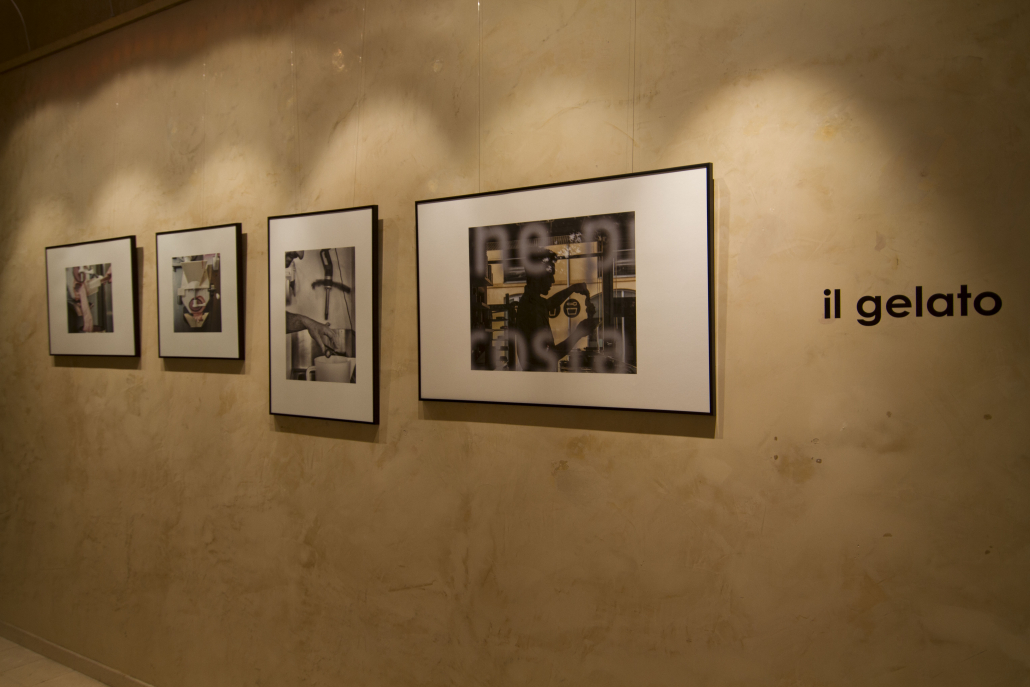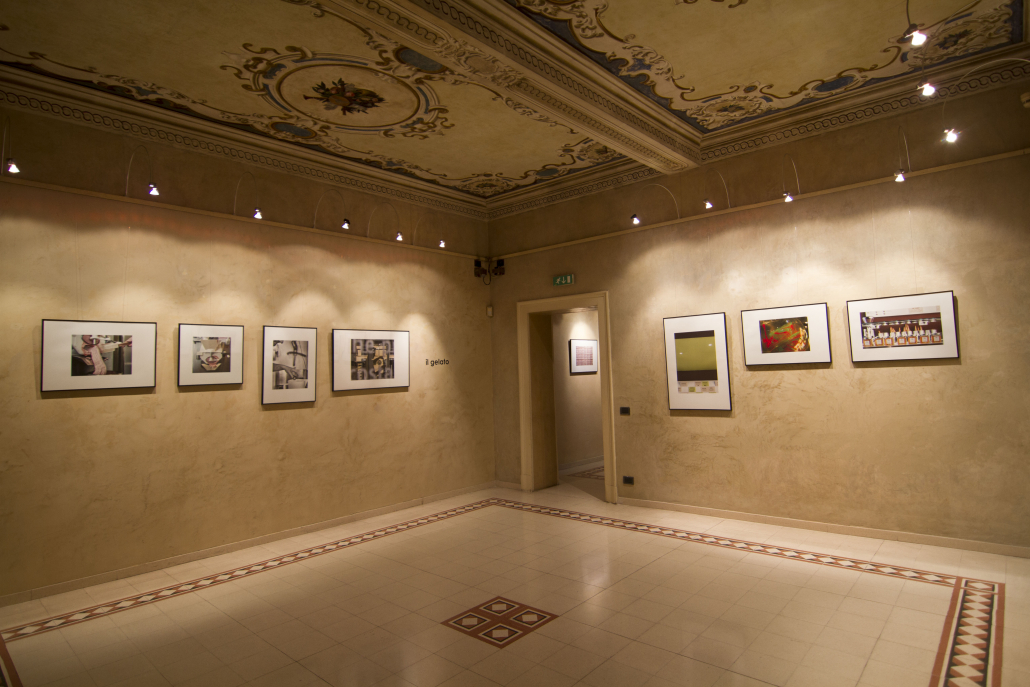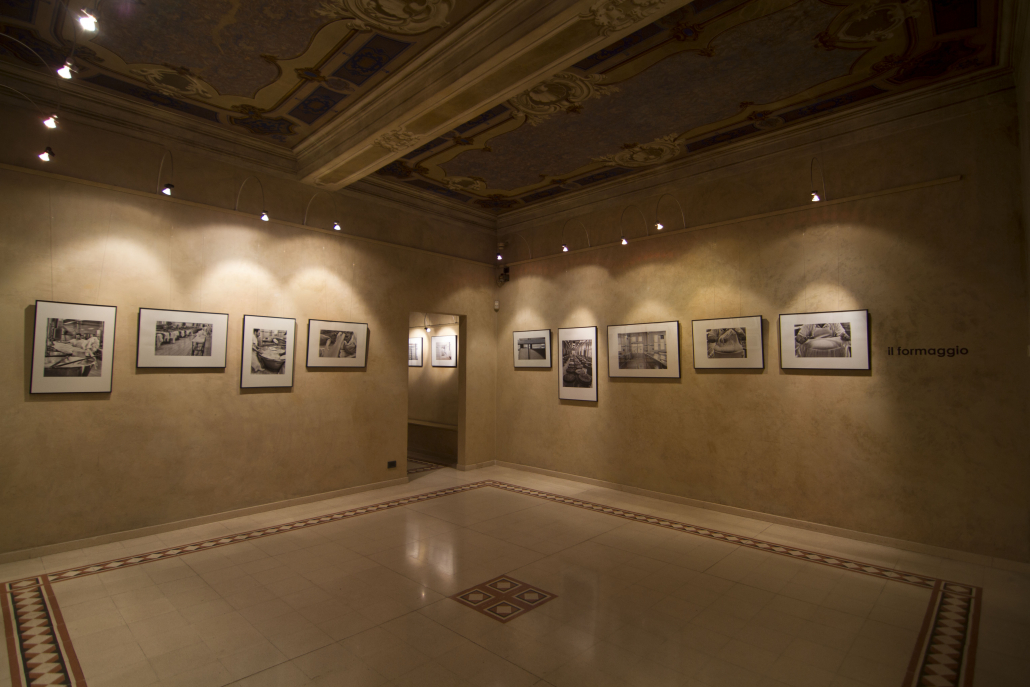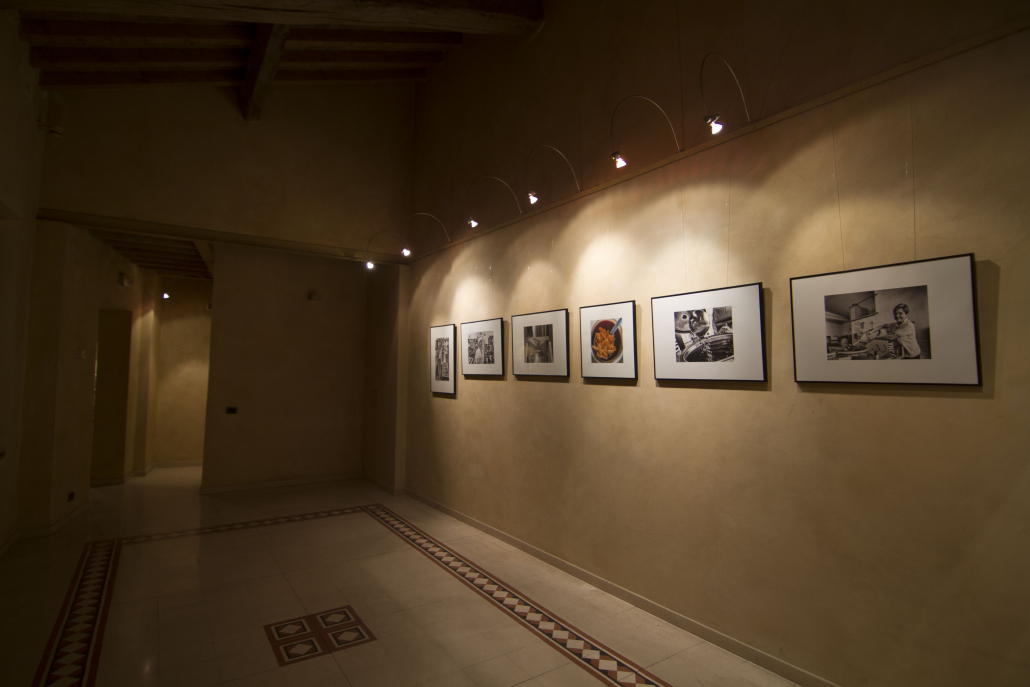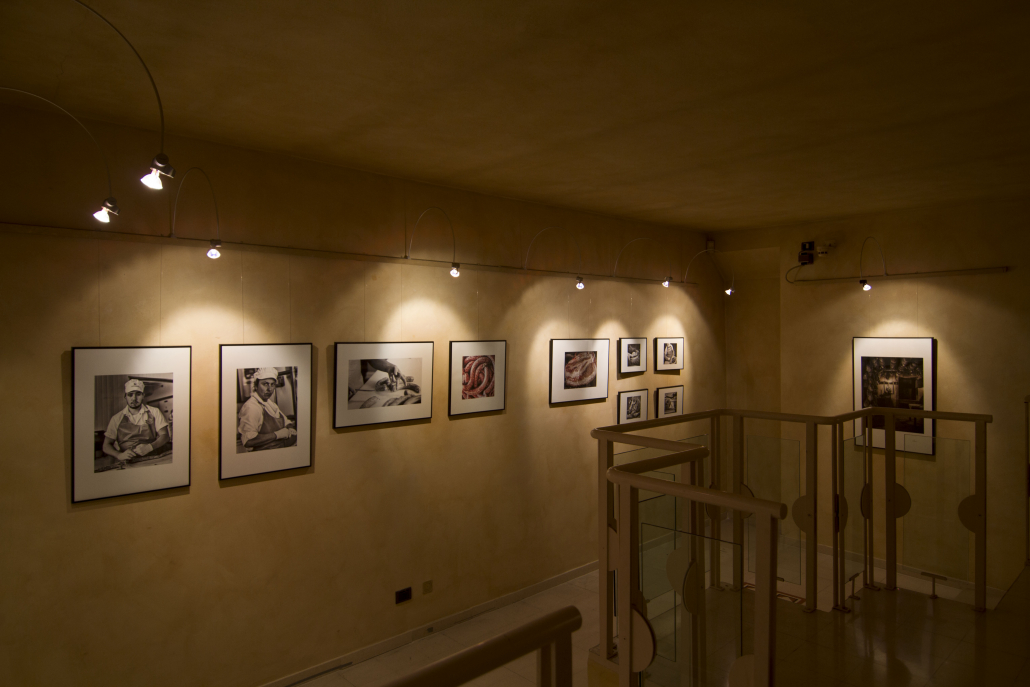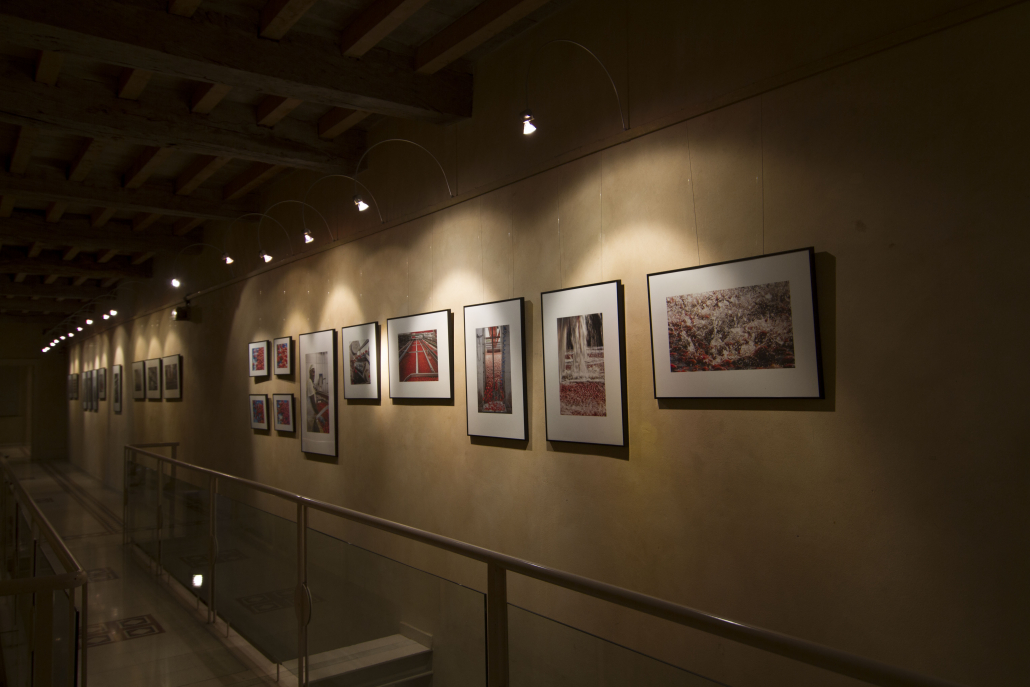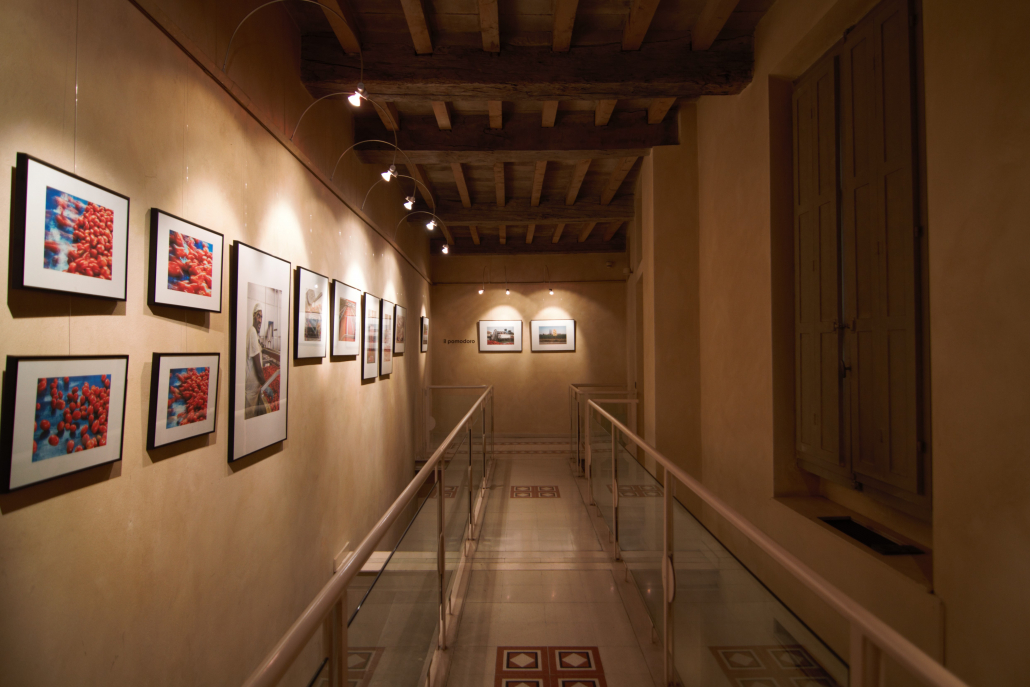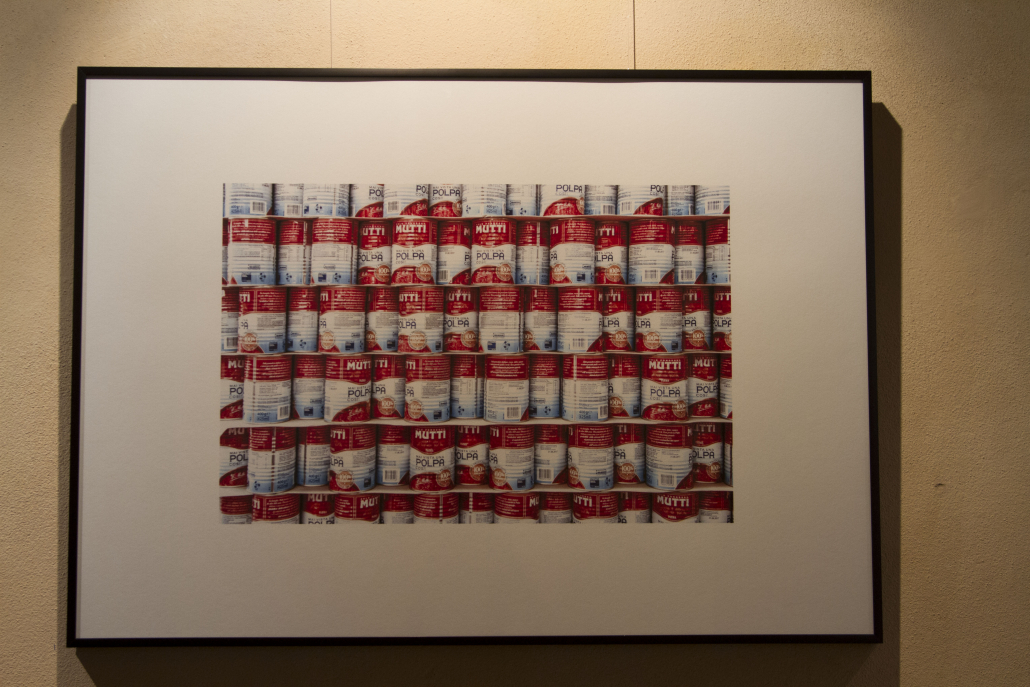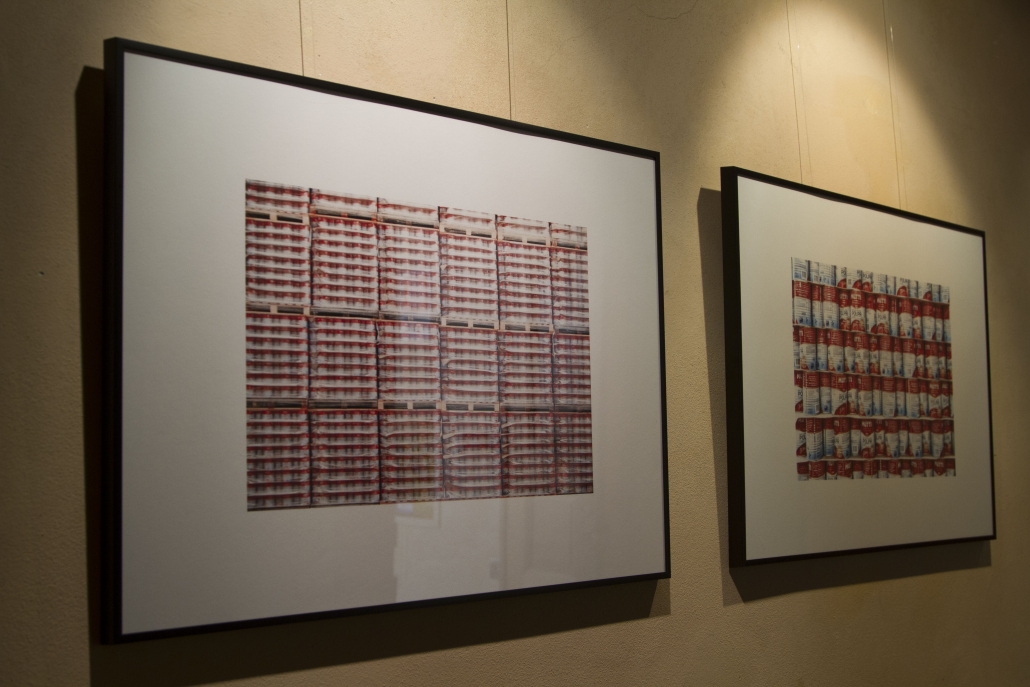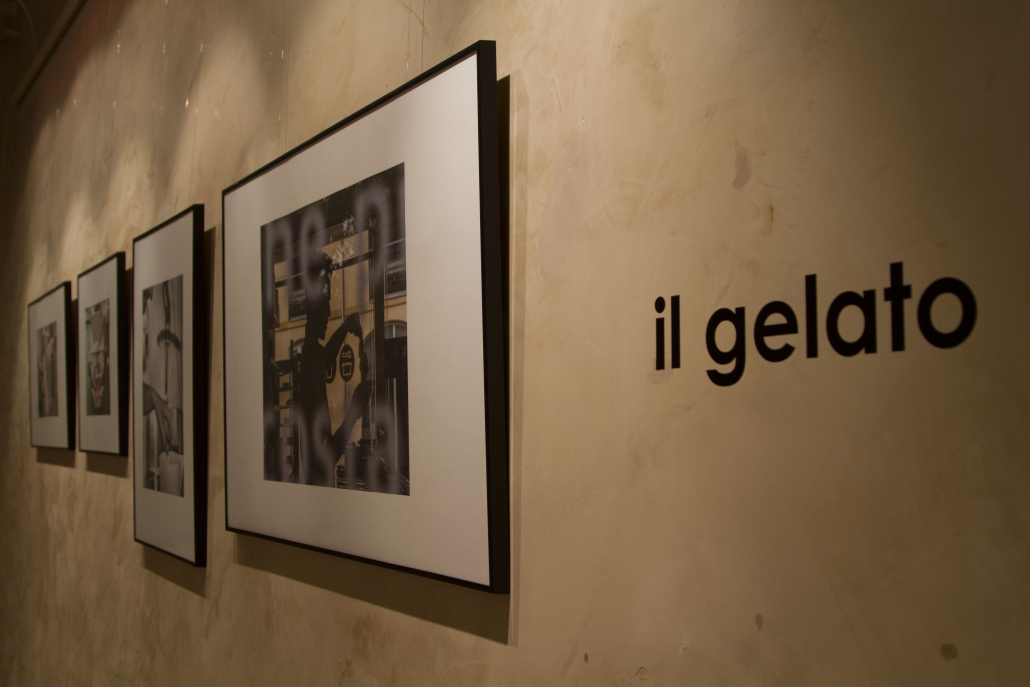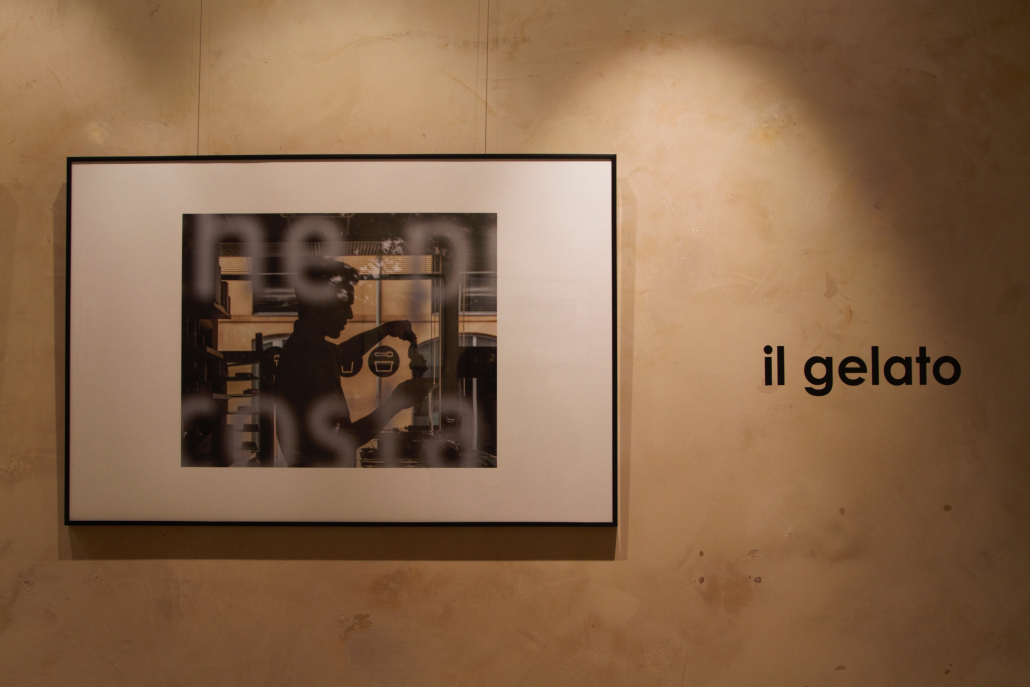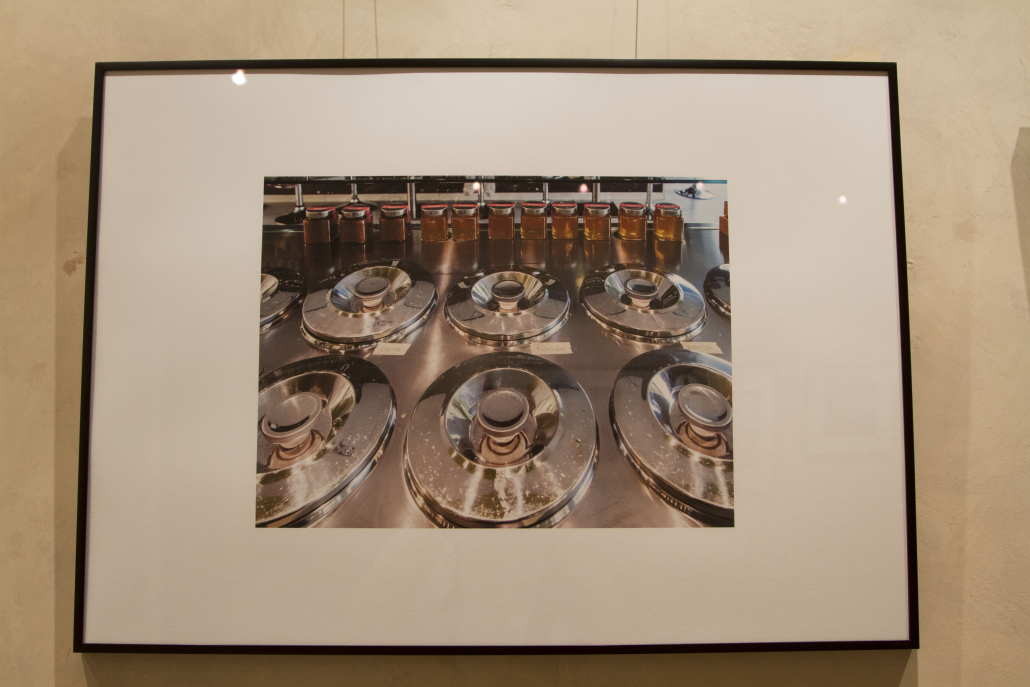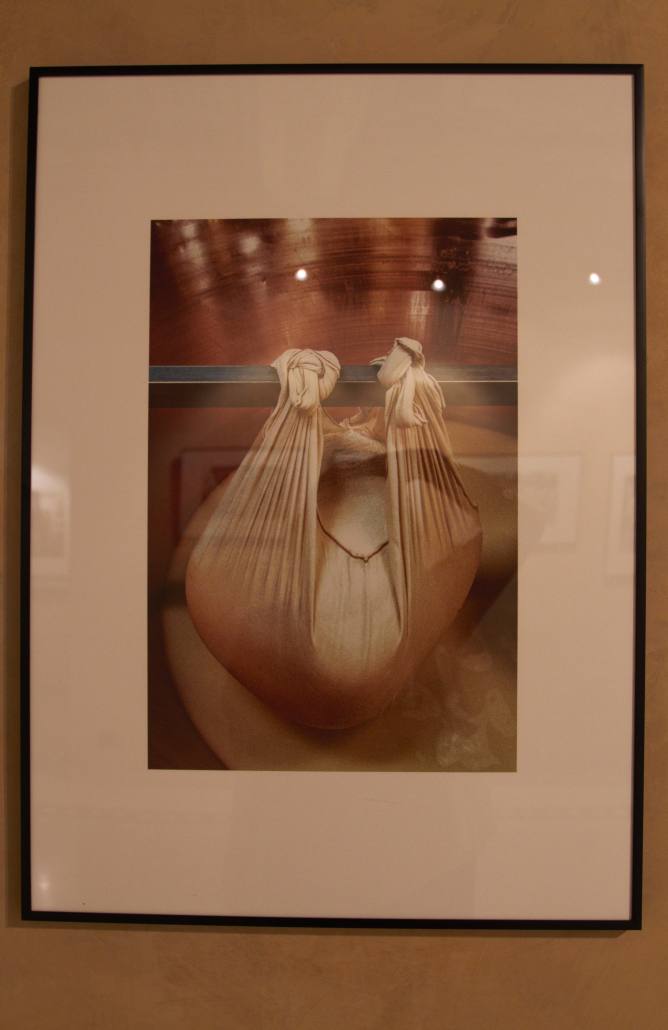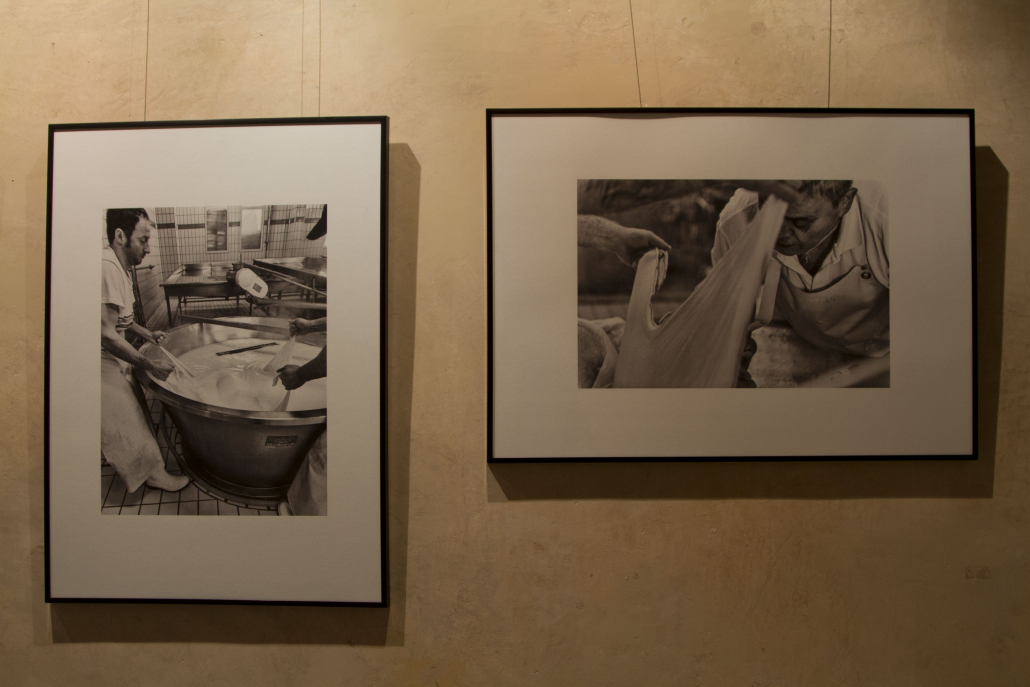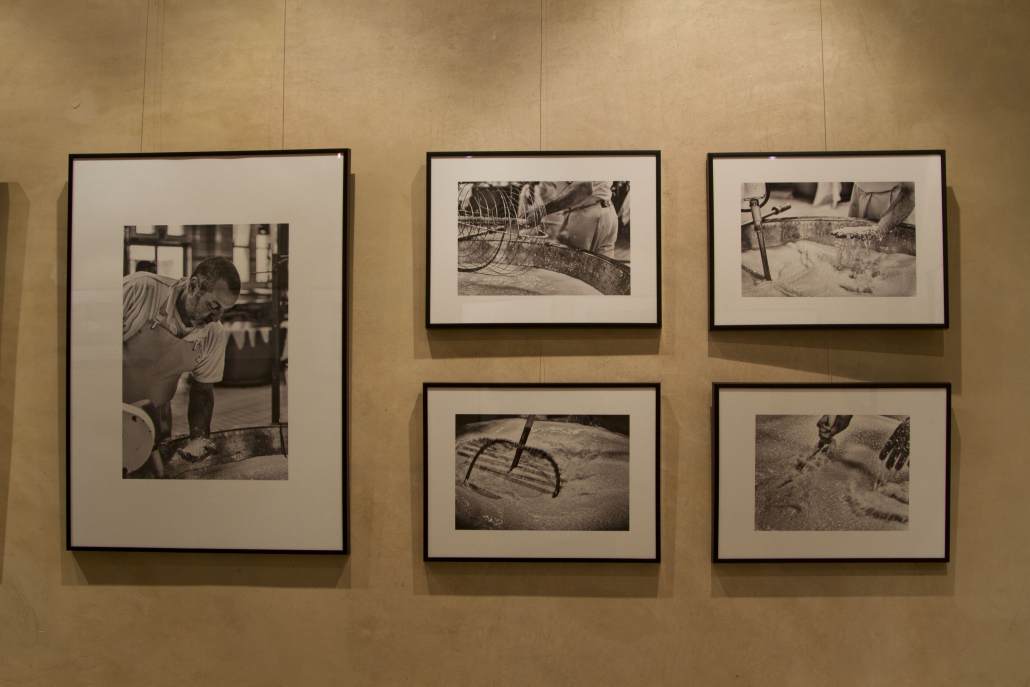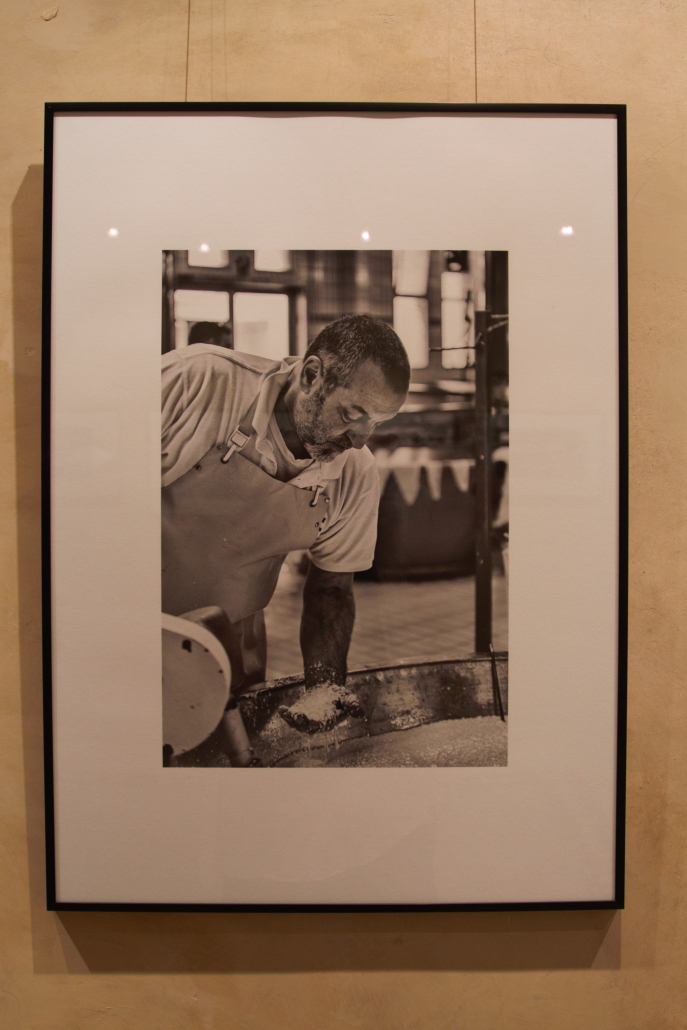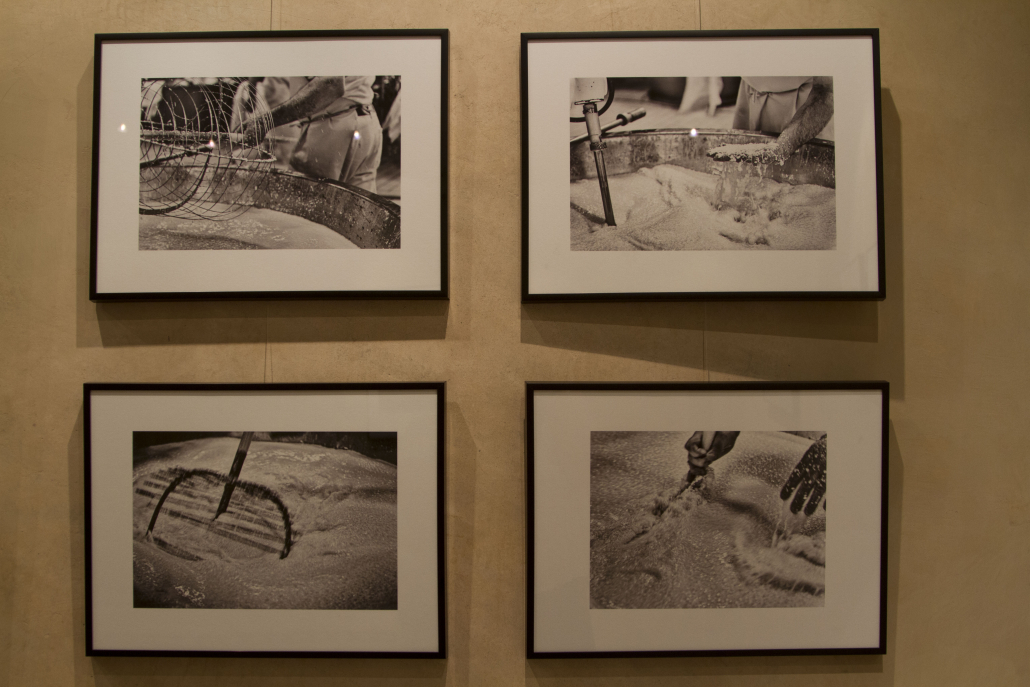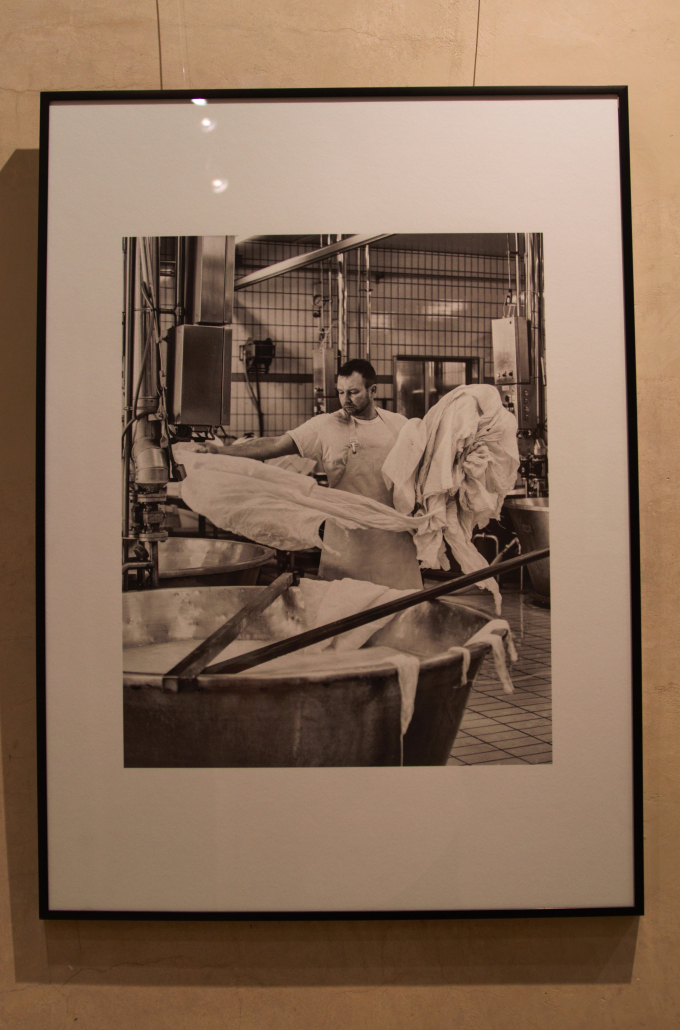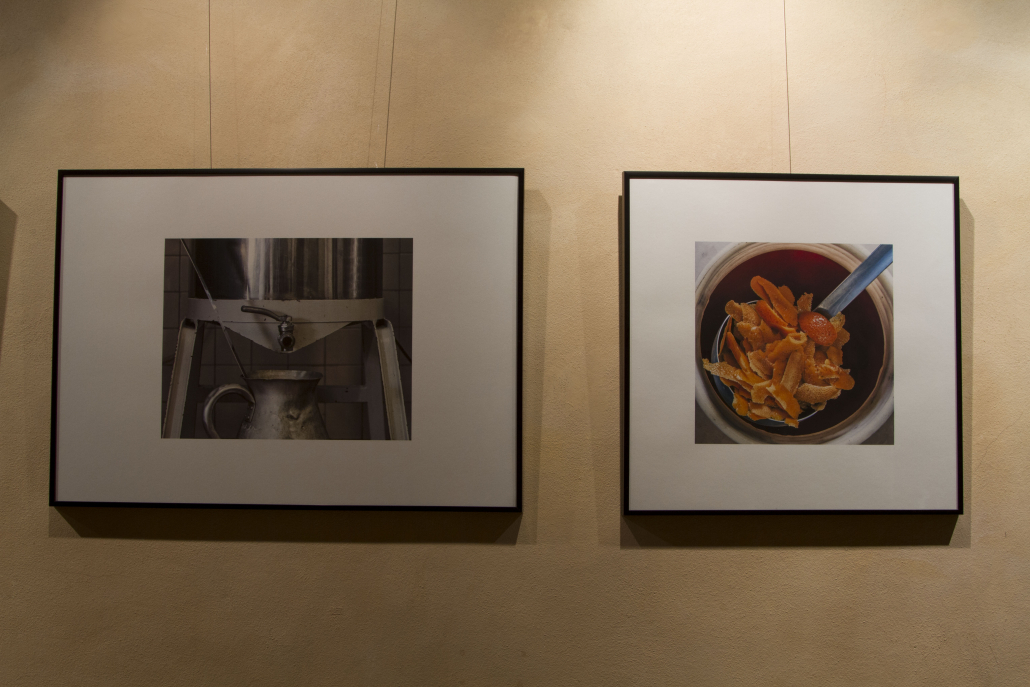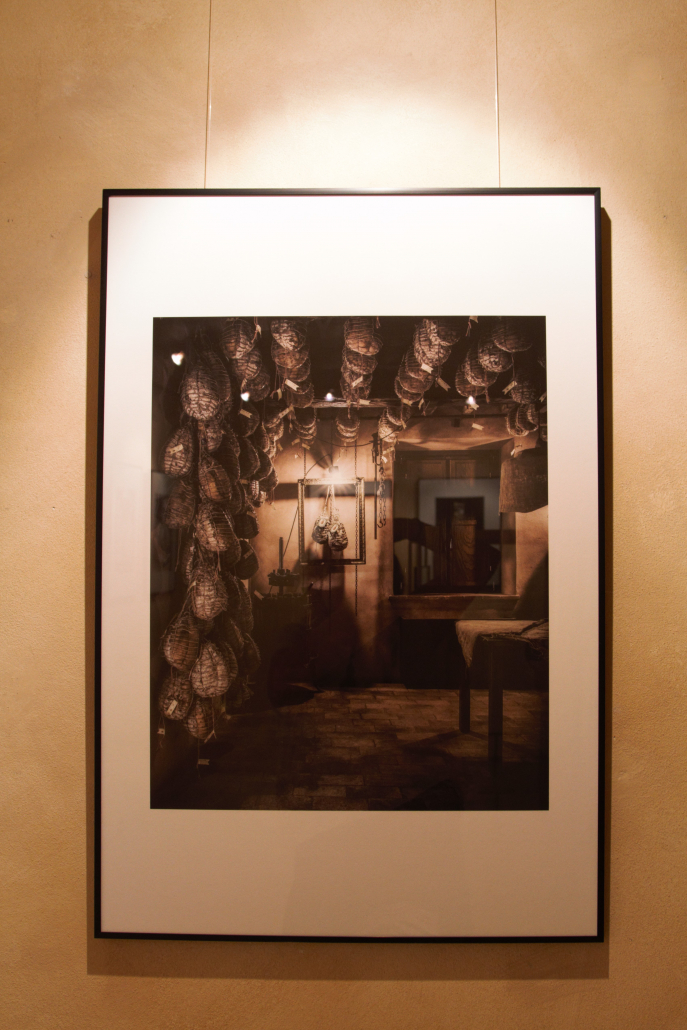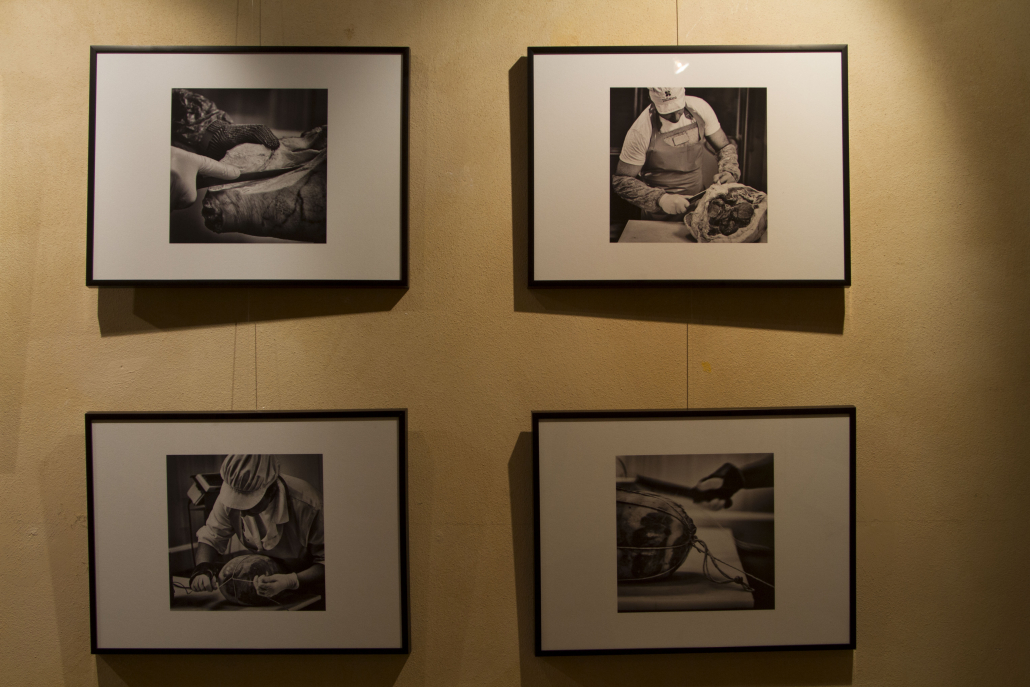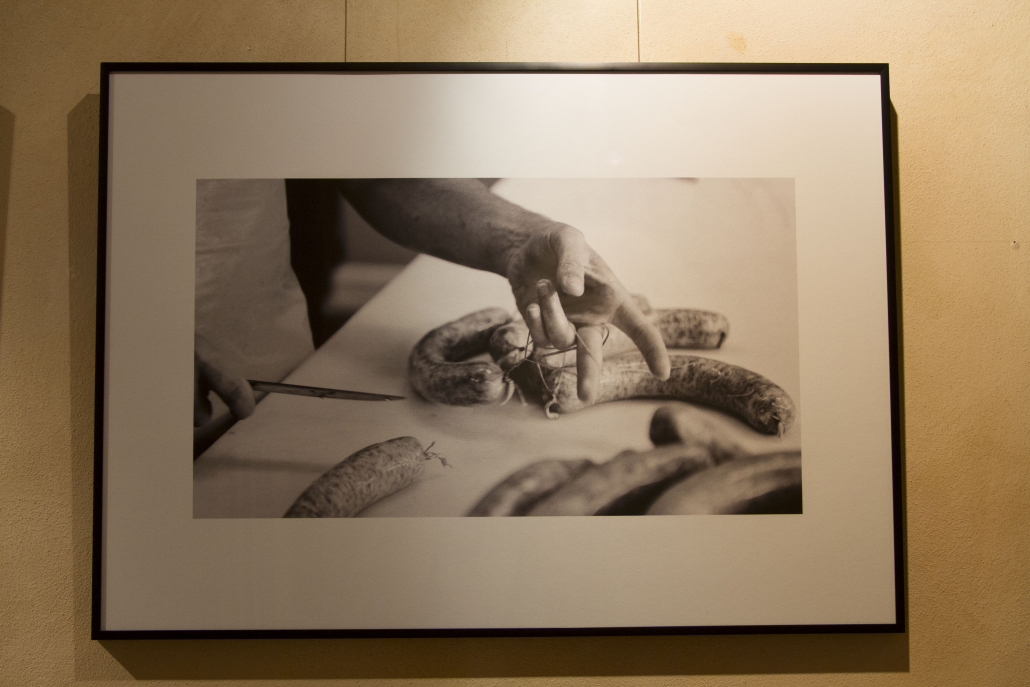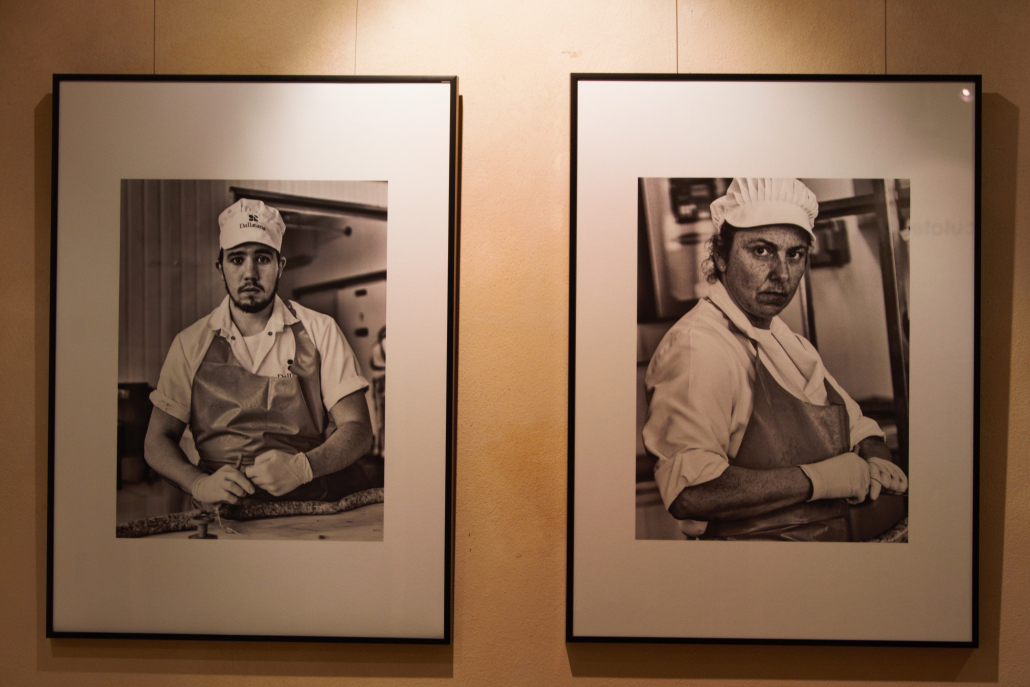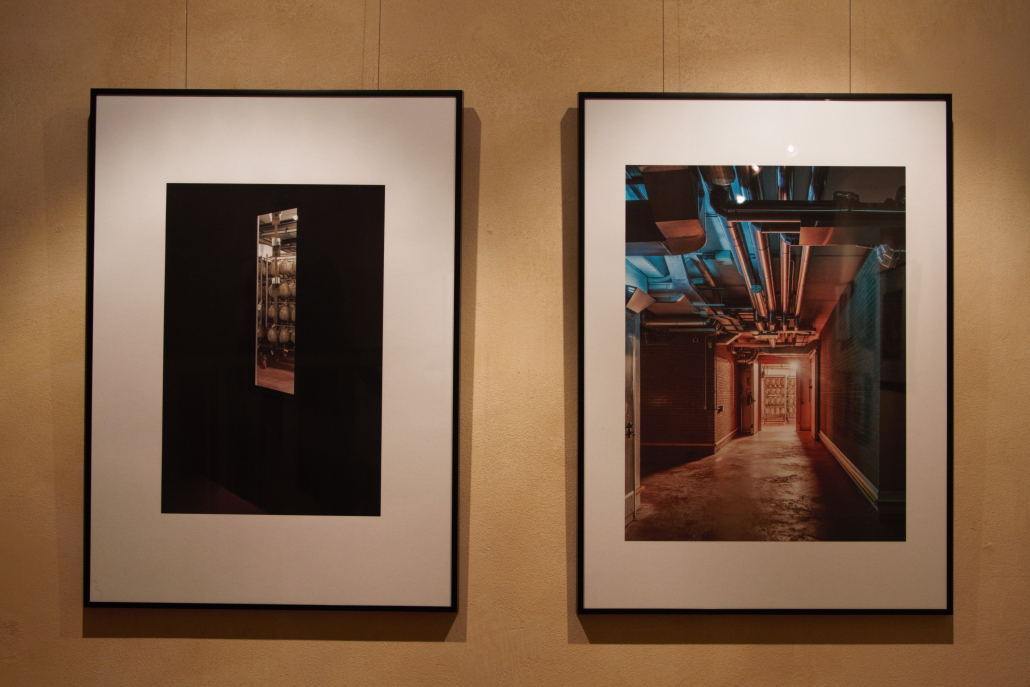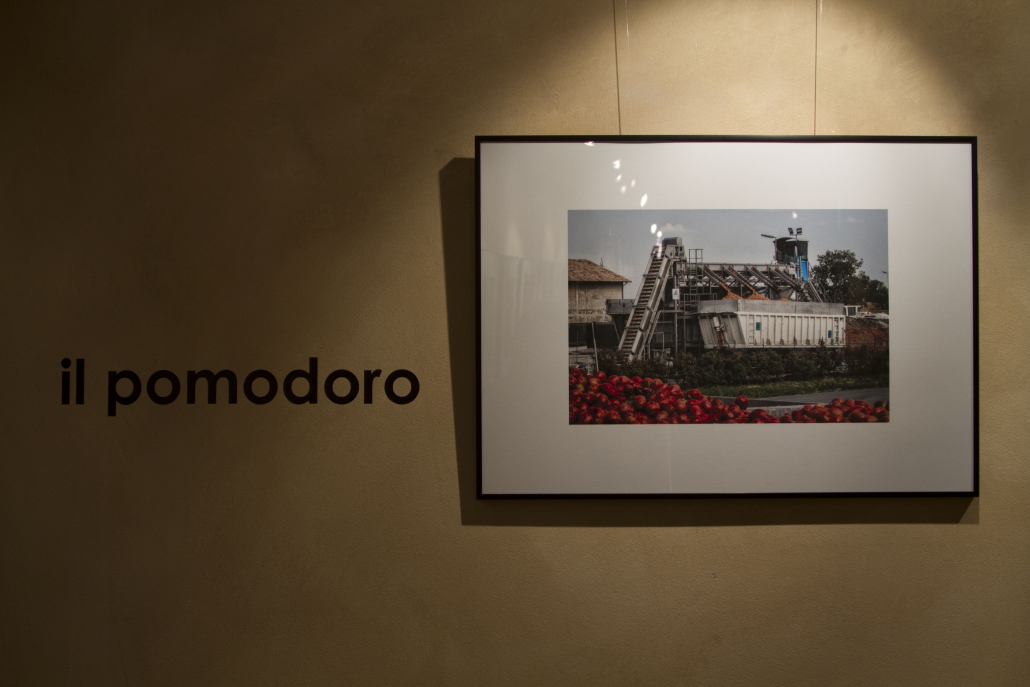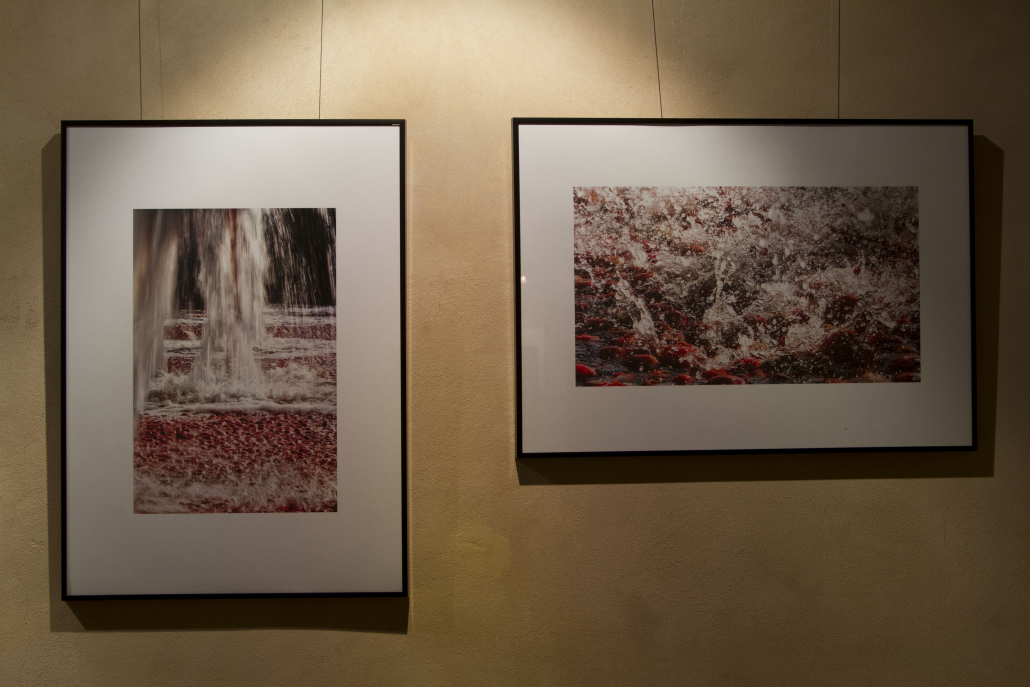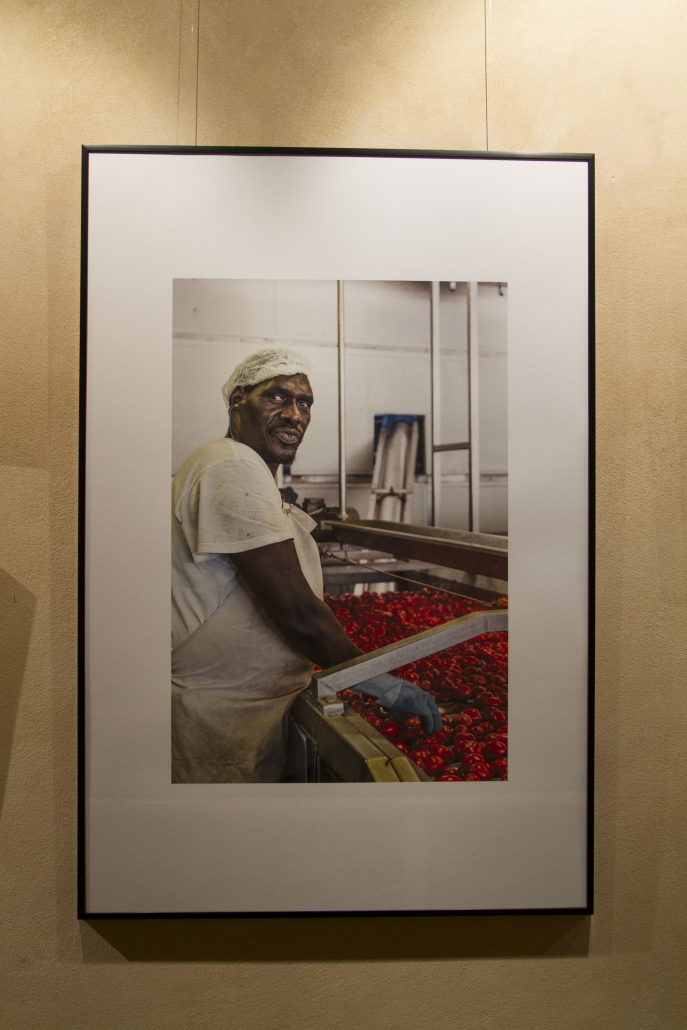Gli Ori di Parma. L’industria. Il cibo. Il lavoro
Photo by Francesco Maria Colombo
Palazzo Pigorini, Parma
11 June – 17 July and 2 – 25 September 2016
The photographer is a musician who began to observe the places he travelled and the people, especially the people he met. He was asked to photograph the food places around our city and realised that he did not like the traditional image of those factories, those production hubs.
Just think, every time they show you, even on TV, the places where Parmigiano, I mean cheese, is stored, they almost always show us a huge shelving unit with the wheels inside. If they advertise cured meats, they invent families or housewives too busy to slice a ham, better perhaps those vacuum-packed in plastic. And if you advertise pasta you go straight to the spaghetti on the table, perhaps with a ready-made sauce.
Colombo thought of doing it differently. He decided to go into the factory and follow the process through which food is prepared, taking care to construct, for each place, a story. So, for pasta, you start with the flour and continue with the processing machines, and then the spaghetti, played like a harp. And when you start with tomatoes, you start with the lorries that arrive and end up with the tubes or the tins in batteries. The same goes for parmesan cheese, where the almost epic dimension of the scene, above all the preparation of the curd and the filtering to create the wheel to be put to age, is almost unheard of in the story of the process. Then there are the cured meats, with the always manual modelling of ham or that of other types of sausage, from culatelli to salami: here the risk was different, to propose scenes that were too truculent, the quarters of the animal, the blood, the remains of the processing, yet here too Colombo was able to discover the mysterious dimension of that work, right down to the photos where the hanging cured meats are in semi-darkness, in a sort of Fort Knox of genuine food.
Of course, there are also the anchovies, the ice cream, the liqueur, as if to say that Colombo, working on all this for almost two years and taking thousands of pictures, has constructed a sort of tale of a lunch, of a dinner with food that is all processed in the area richest in history in our northern region, precisely as far as food processing is concerned. All true, but it would be wrong not to grasp some of Colombo’s choices: he never photographs the machines but the men who work with the machines, and so this series of photos should also be seen as a choice of portraits of people around whom, their gestures, their concentrated sometimes cheerful expressions, Colombo has been able to work, capturing their humanity with intelligent participation. Factories are not empty systems but places inhabited by people, often of different races, of different origins, working together with conscious dedication.
Then there are a few technical choices to be made: many times Colombo cleverly uses slower times to represent the movement of, say, the tomatoes on the runners, of the hands working the curd, while, in other cases, he skilfully alternates between true and muted colour, punctuating certain colours that are in themselves strongly charged, such as red, with low tones. No, Colombo does not tell the myth of the machine-made cheese, but that of the man who controls the machine and creates a food by intervening at every stage of processing. In short, you have before you a block of stories from different places, all relatively close to Parma, places where what we choose to put on our table every day is produced. Only this time, we know who, how, with how much effort all this is done.
If it is true that here each factory offers its own precise tale, its own story, it must be said that one could multiply tenfold the images of each factory by giving voice, gestures, action to the people who work, day after day, often with high, conscious specialisation. It is they who invent, day after day, our -factory meal-.
Gloria Bianchino
ORGANISATION
University of Parma
Sistema Museale di Ateneo
IN COLLABORATION WITH
Municipality of Parma
UNIforCITY
SISTEMA MUSEALE DI ATENEO
Luca Trentadue, Rector’s delegate
Marina Gorreri, responsible
AREA RICERCA, INTERNAZIONALIZZAZIONE, BIBLIOTECHE E MUSEI DI ATENEO
Barbara Panciroli, manager
Barbara Rondelli,
Michele Sozzi
SET-UP AND GRAPHICS
Maria Amarante
MOUNTING
Coopservice
11 June, Piazza Cesare Battisti, 16:00
Elena Fava
Dipartimento di Scienze degli Alimenti
‘Parma: art, culture, music, spas, typical gastronomy. The tourist account of the city and its territory in the papers of the APT fund of the Historical Archive of the Municipality of Parma (ASCPr)”
2 September, Palazzo Pigorini, 17:30 – 19:00
Cristina Mora
Dipartimento di Scienze degli Alimenti
‘Food advertising: The role of the consumer’
9 September, Palazzo Pigorini, 17:30 – 19:00
Franco Antoniazzi
Dipartimento di Scienze degli Alimenti
‘From chemistry to pure ice cream:
the innovation of the Italian gelato tradition in the heart of Parma’
16 September, Palazzo Pigorini, 17:30 – 19:00
Germano Mucchetti
Dipartimento di Scienze degli Alimenti
‘Parmigiano Reggiano cheese, the future of a story that comes from afar’
23 September, Palazzo Pigorini, 17:30 – 19:00
Emma Chiavaro
Dipartimento di Scienze degli Alimenti
‘Cured meats in the Parma tradition’.



